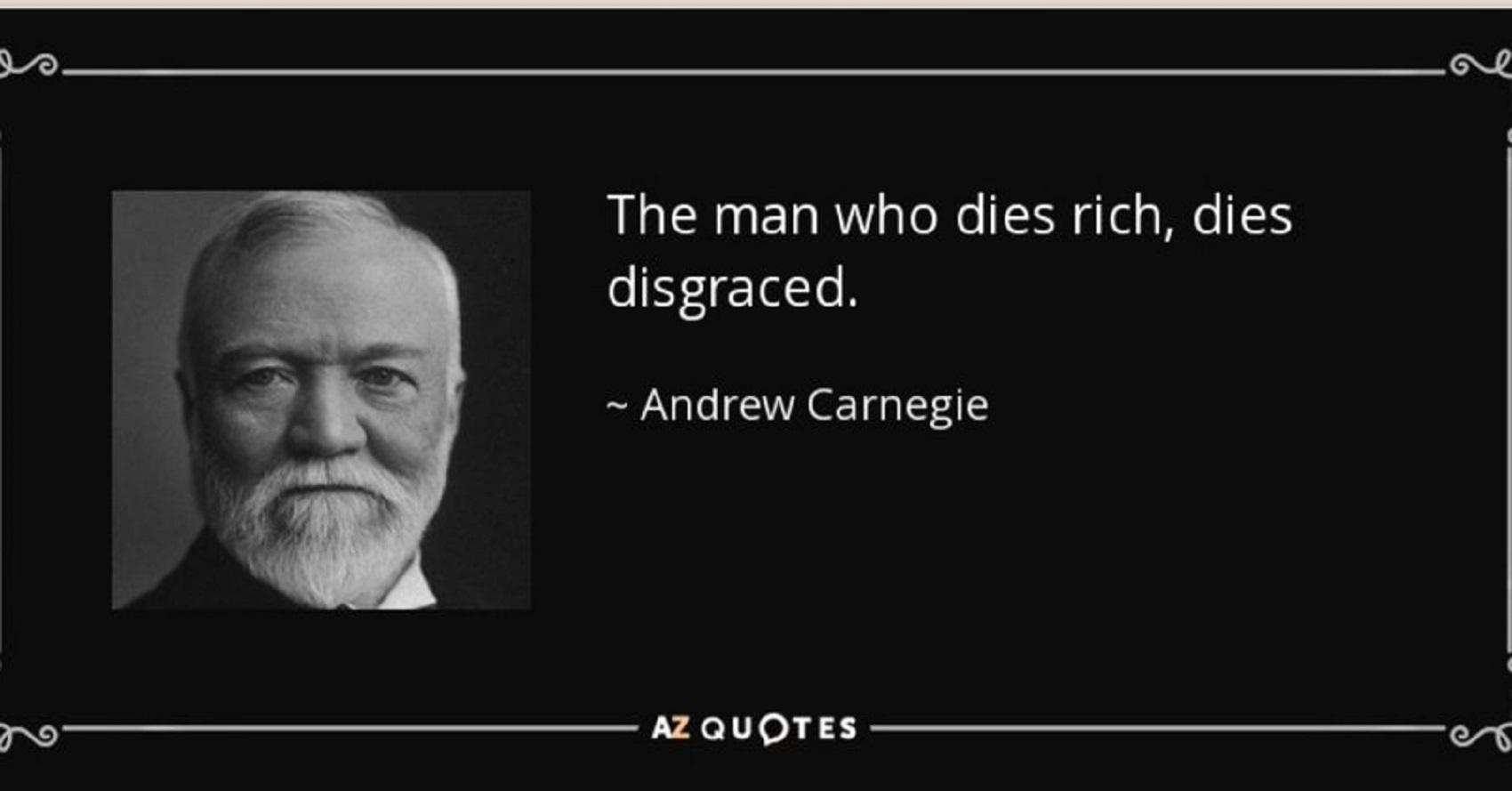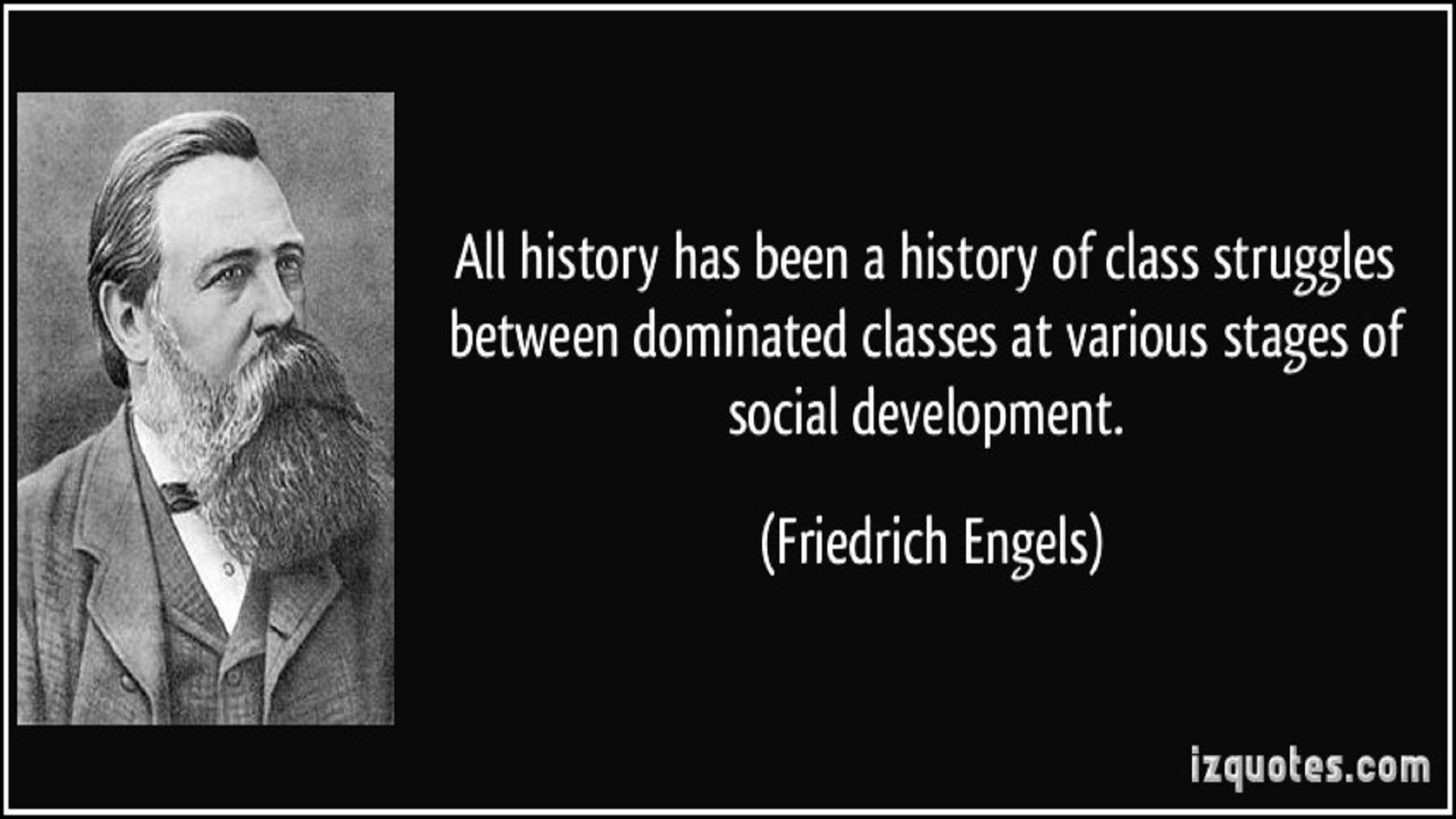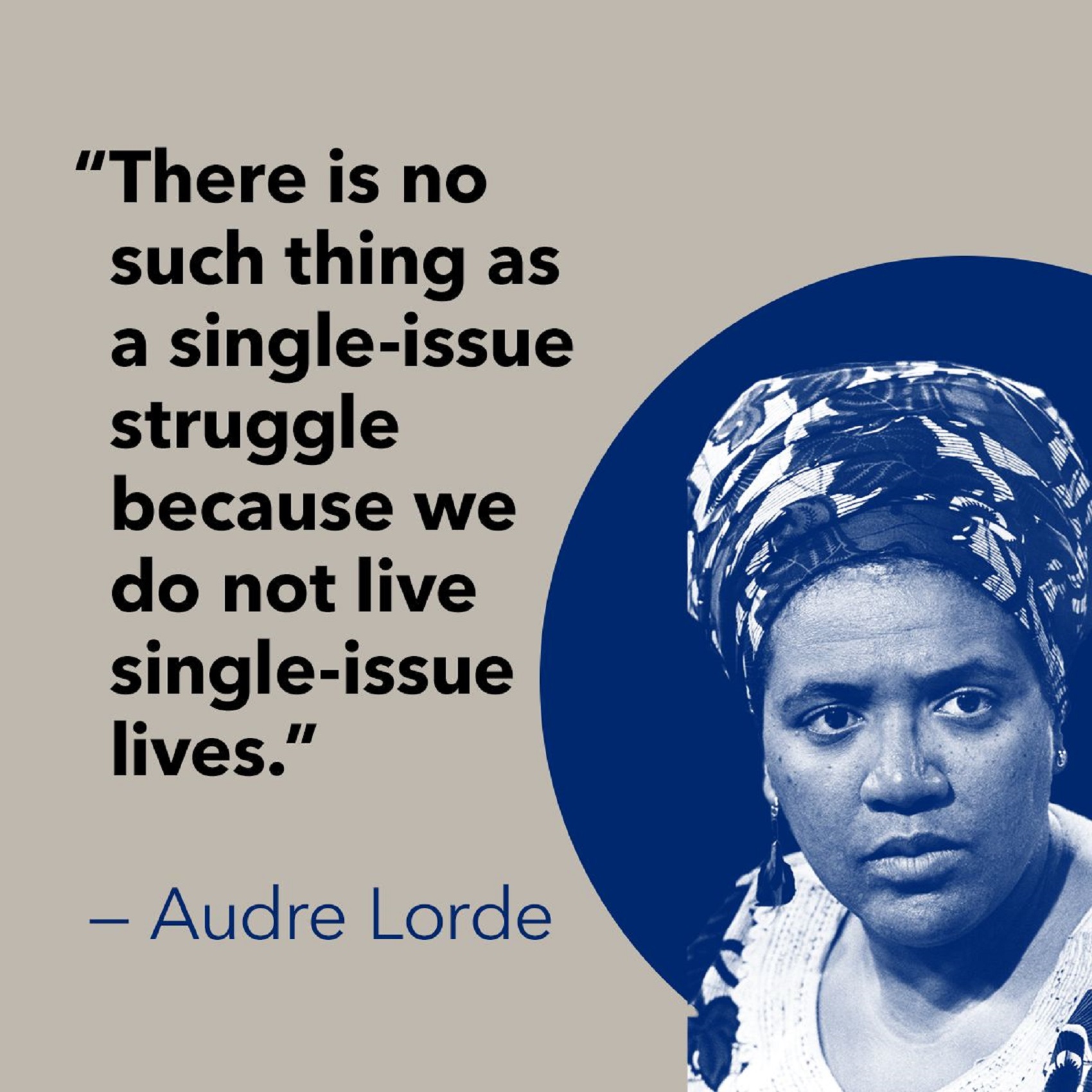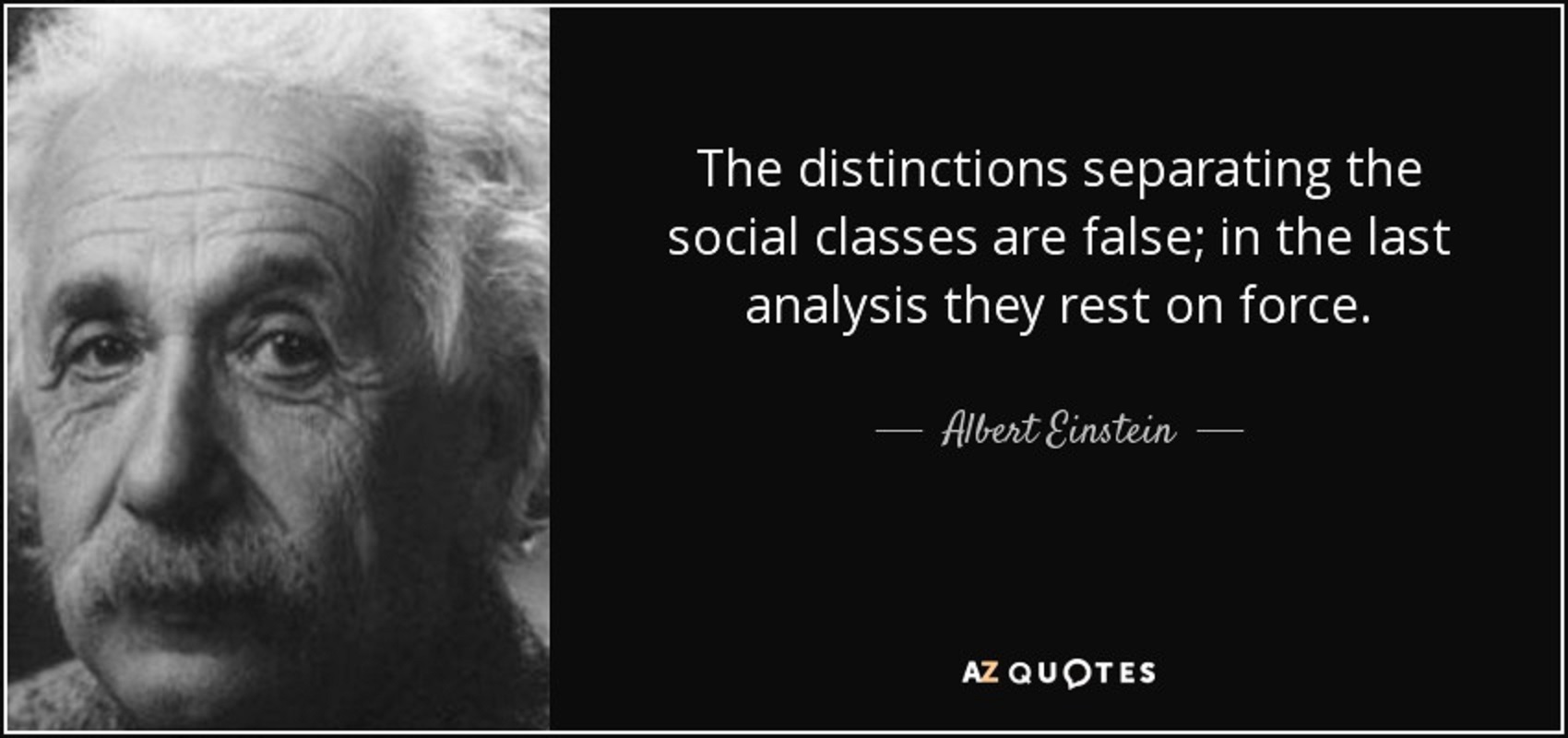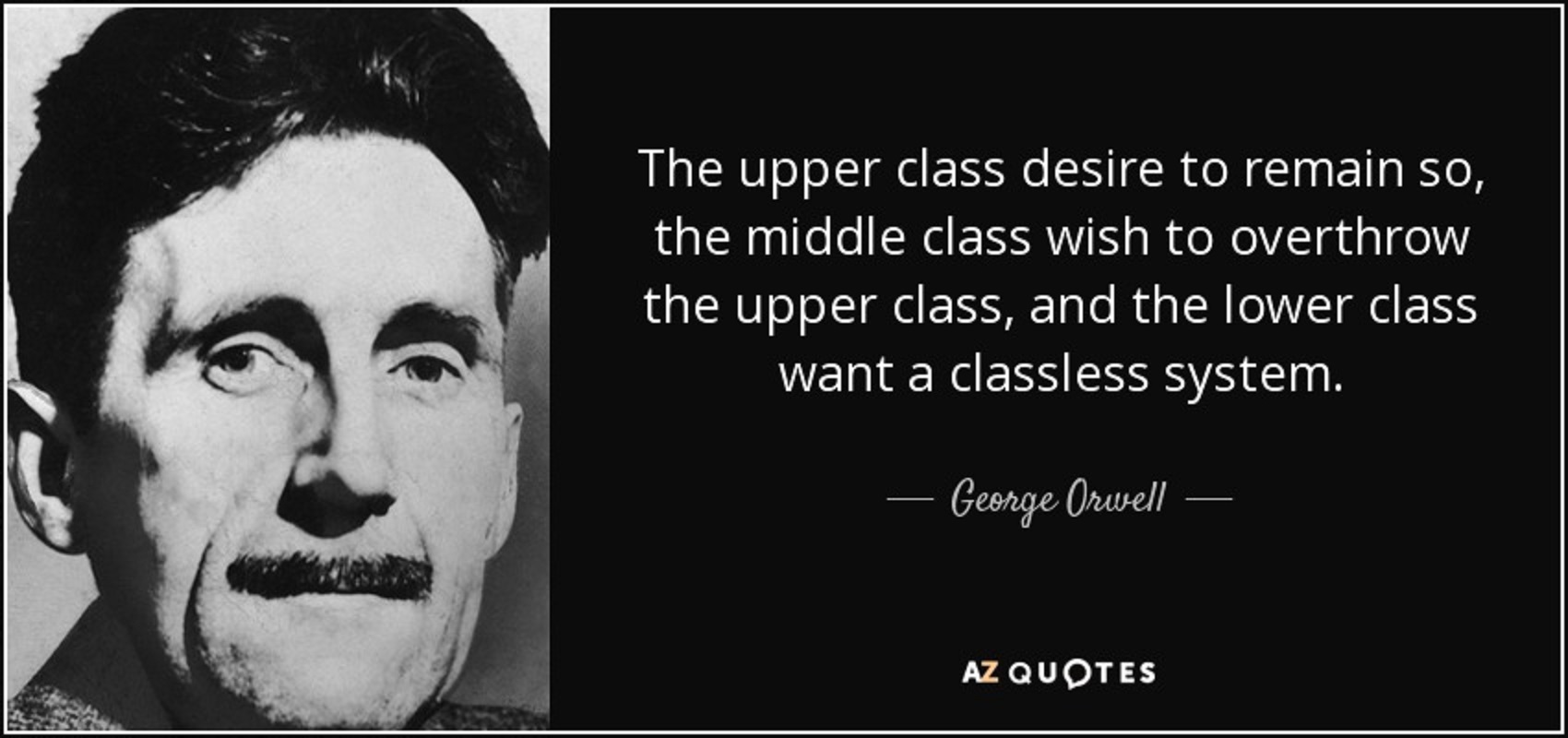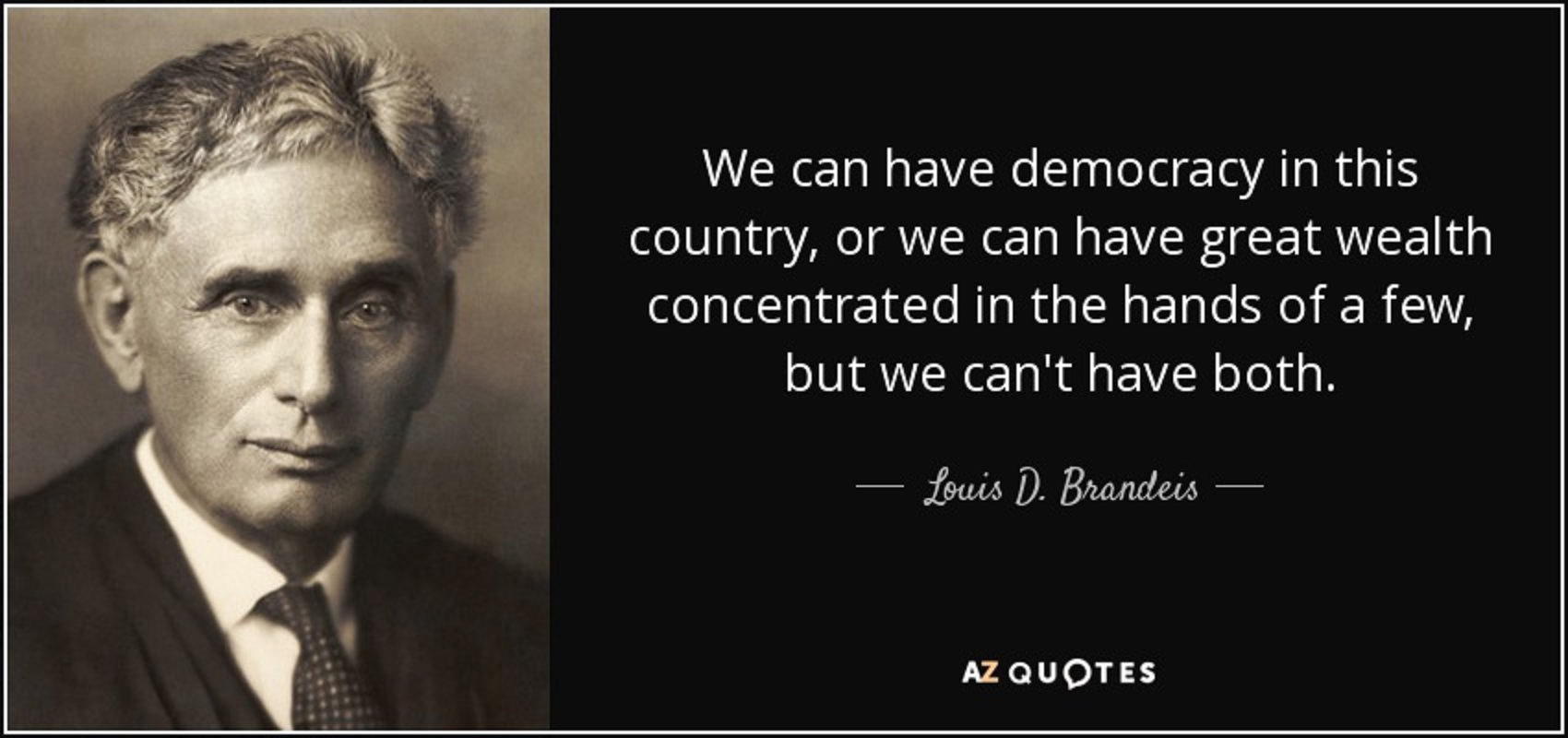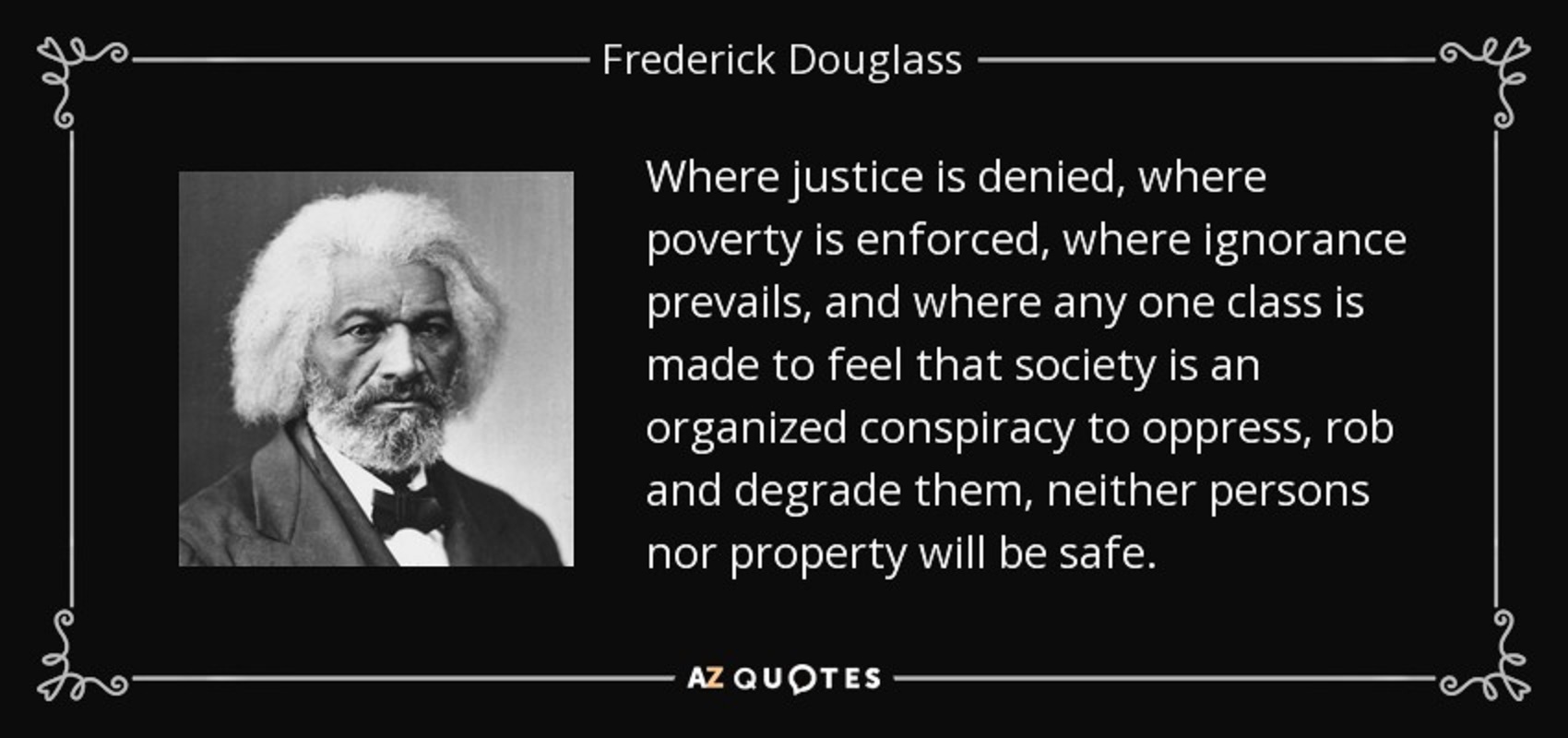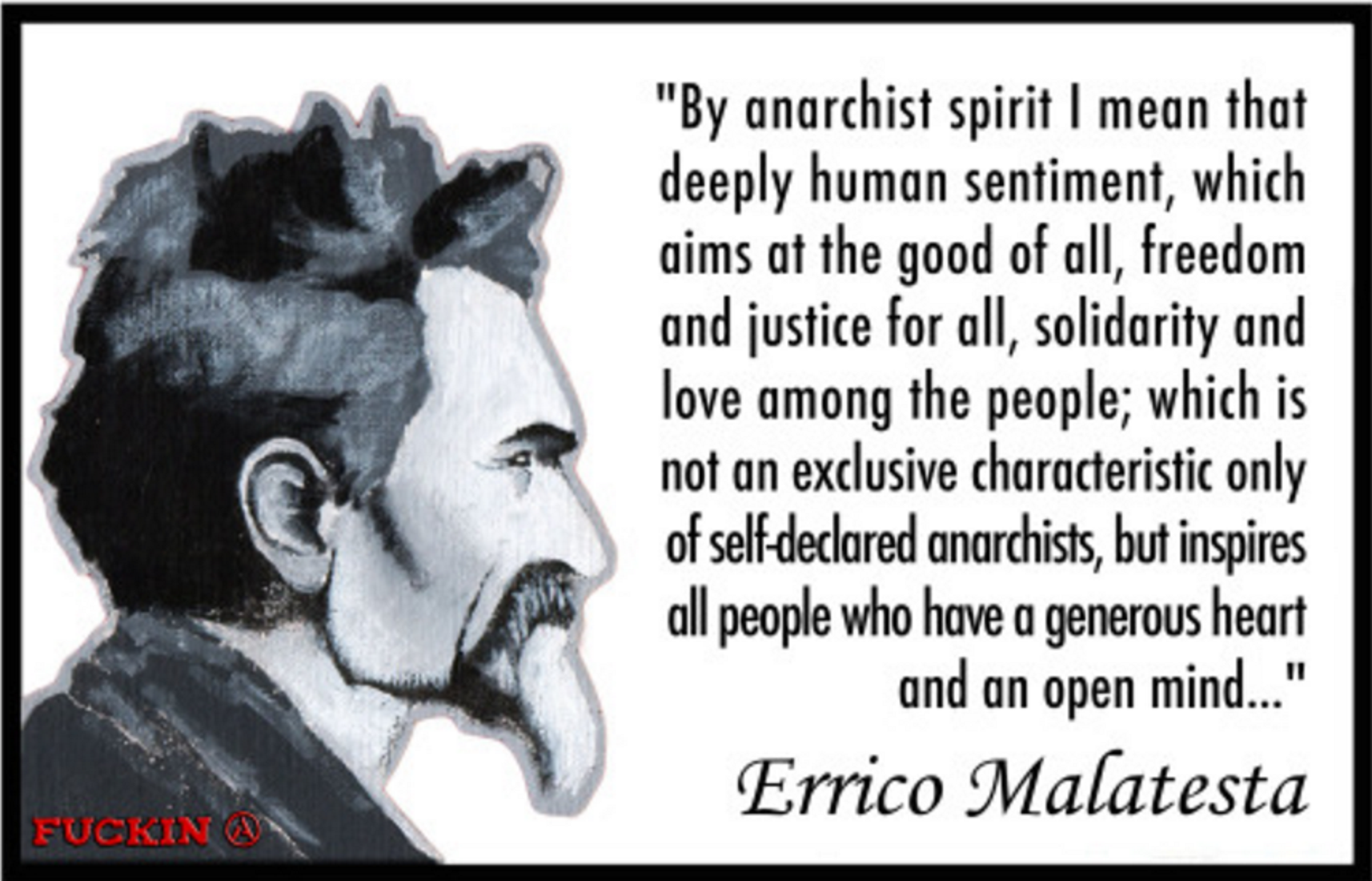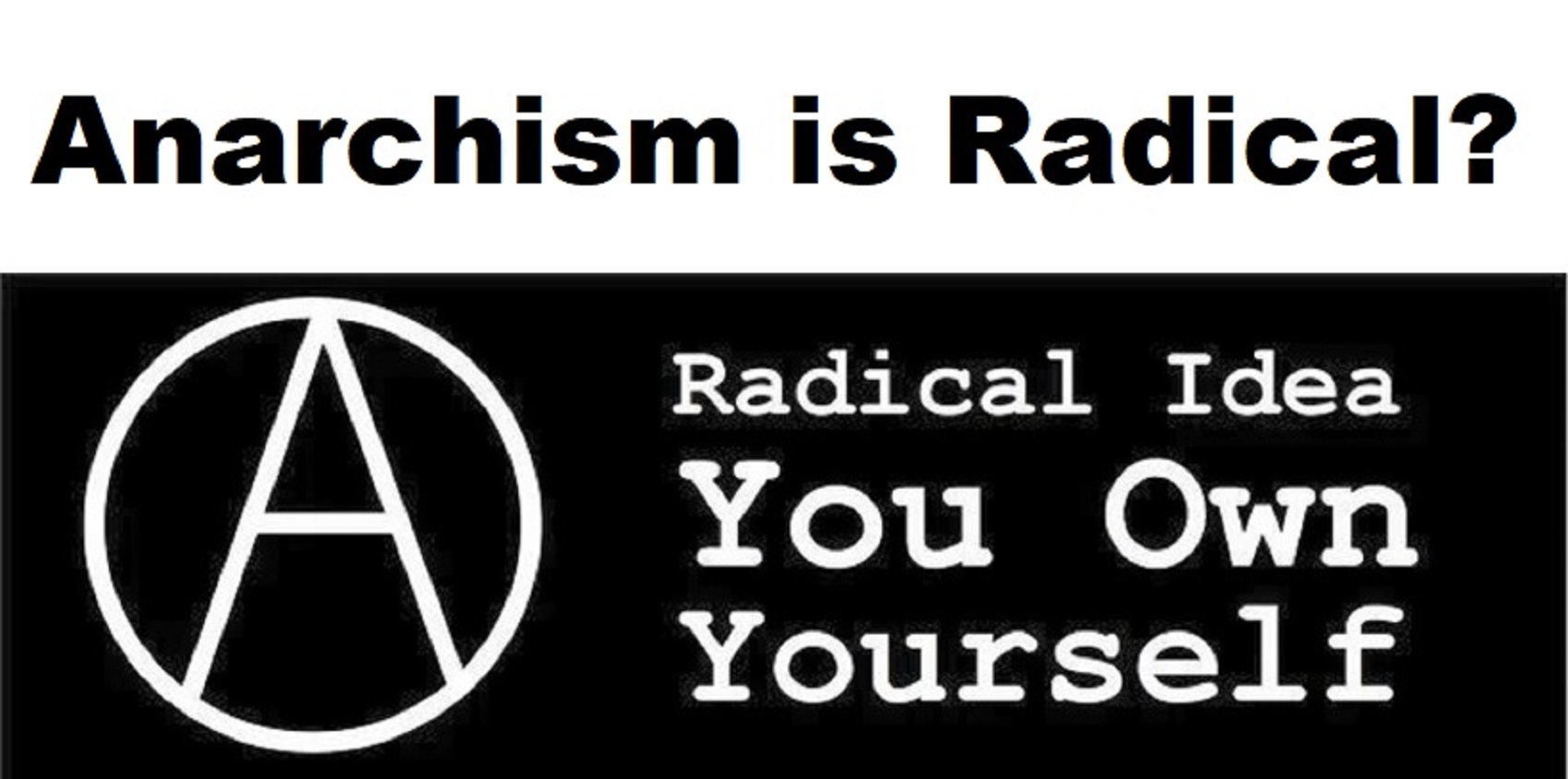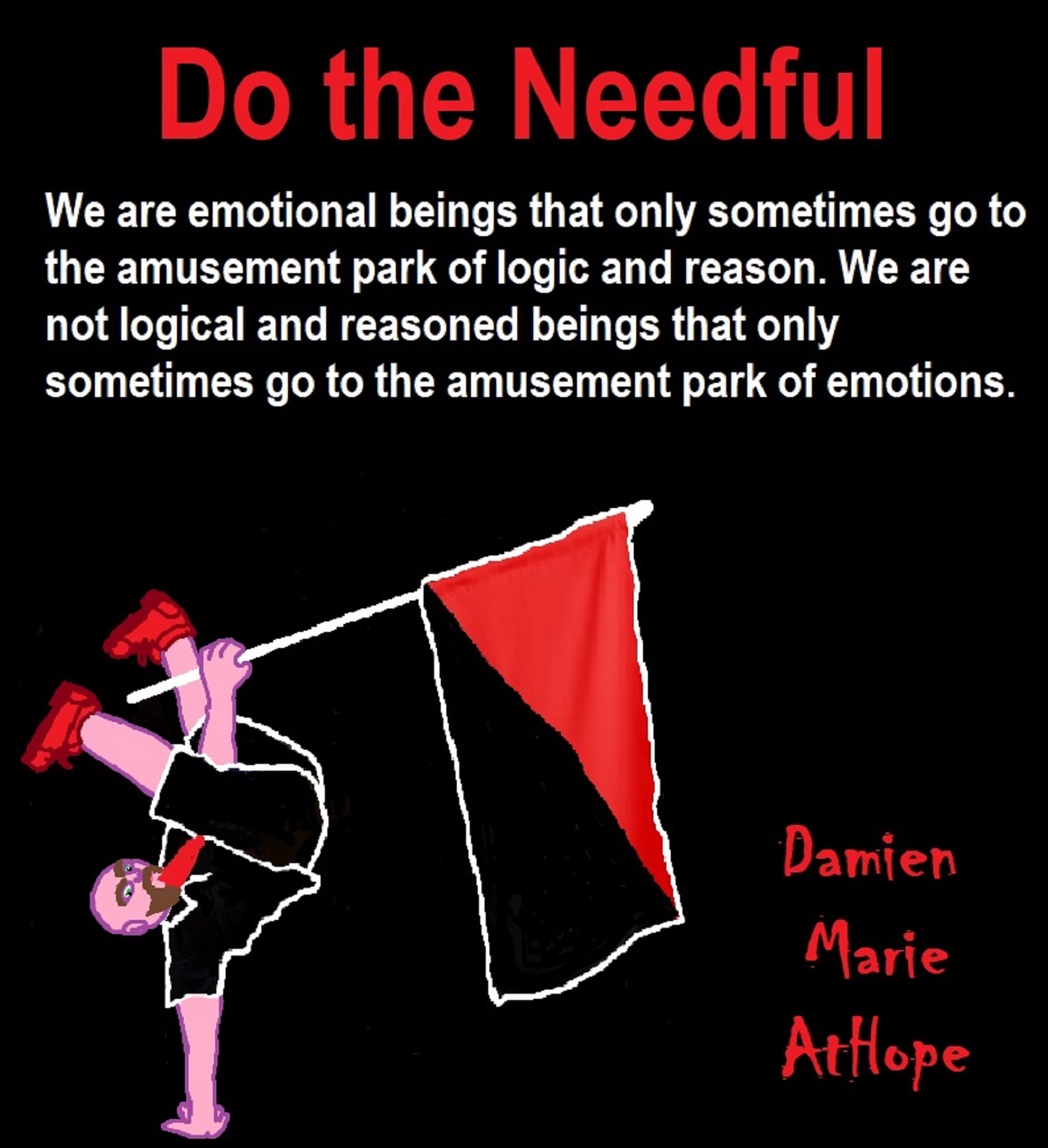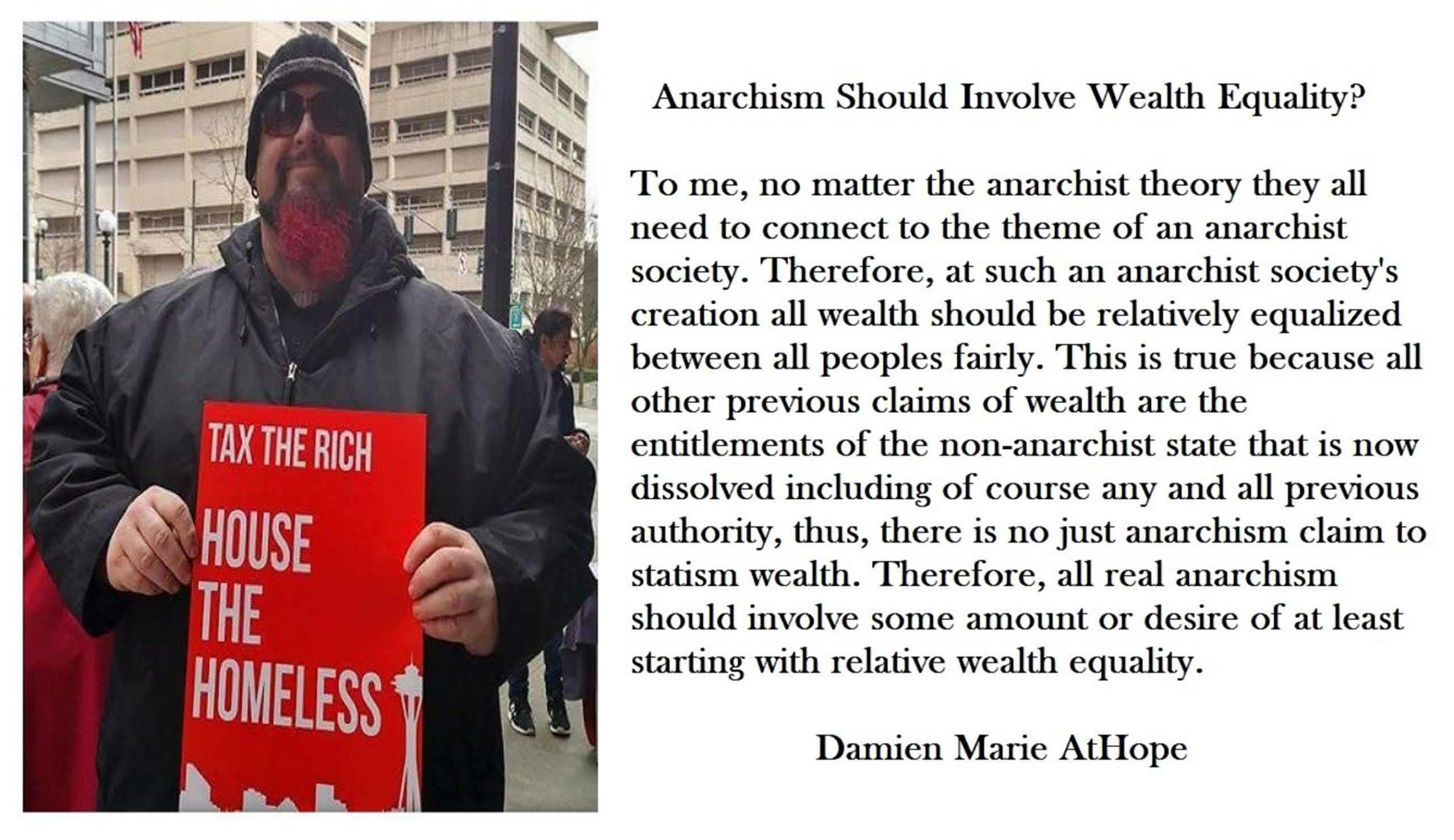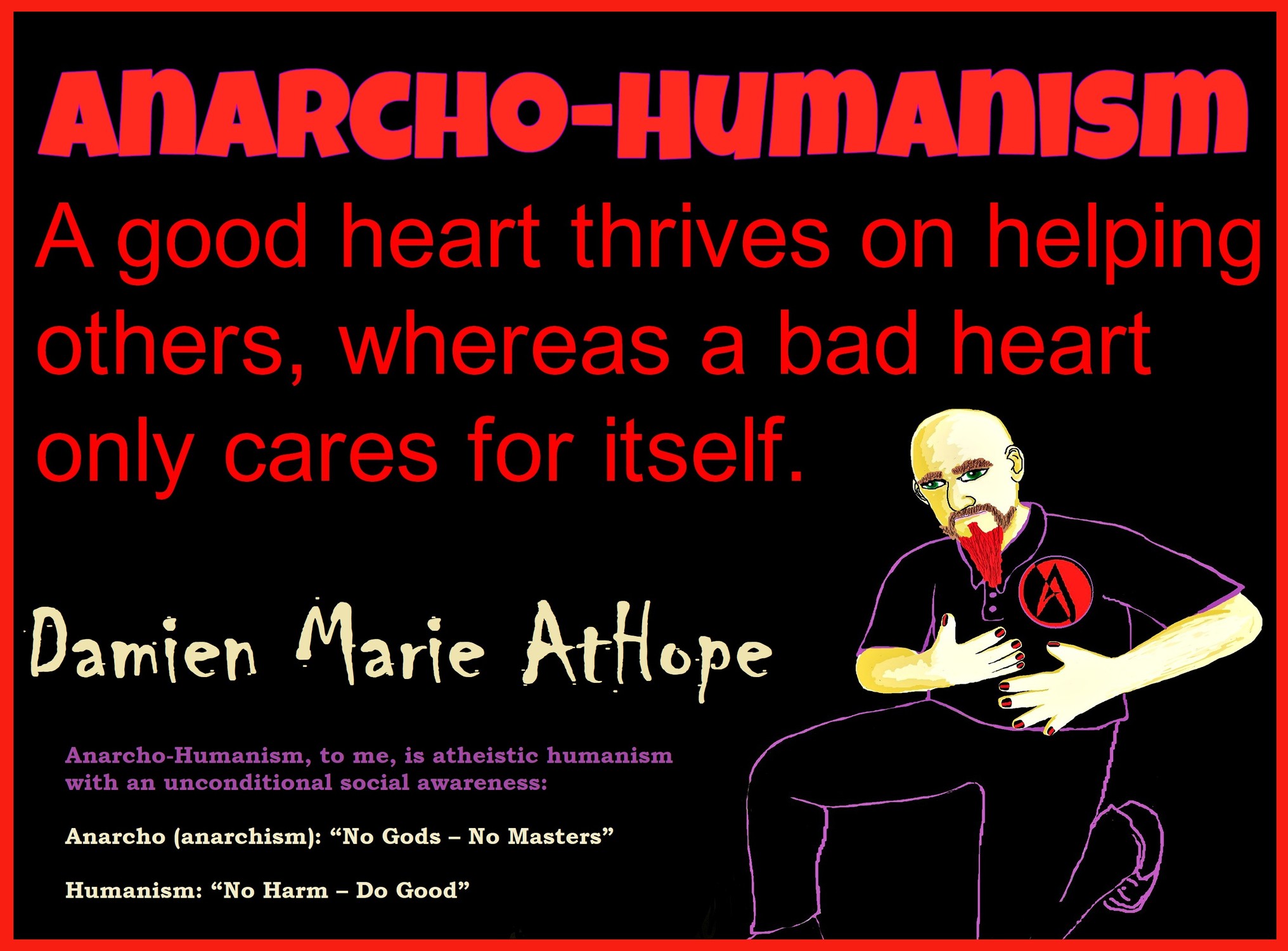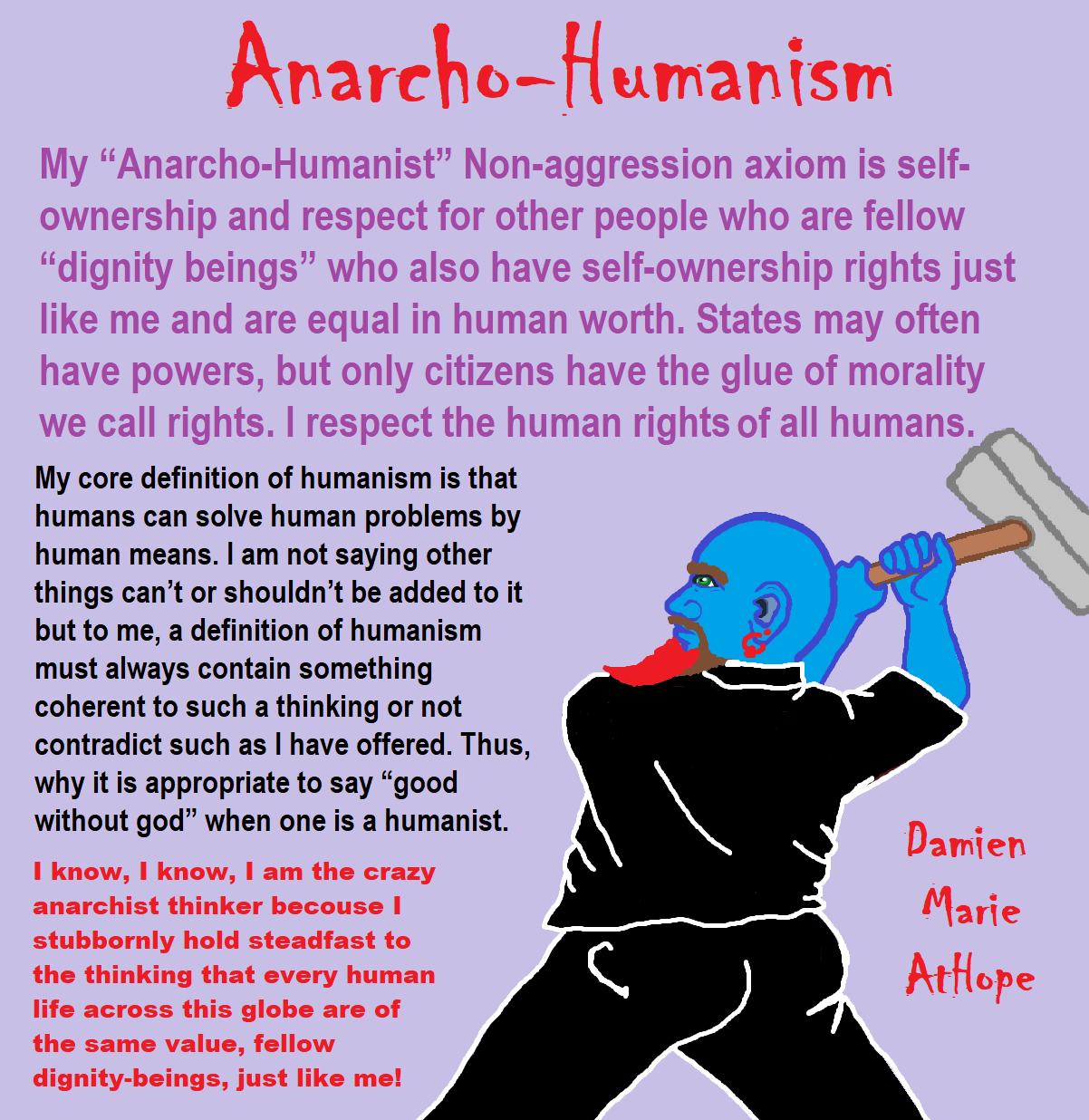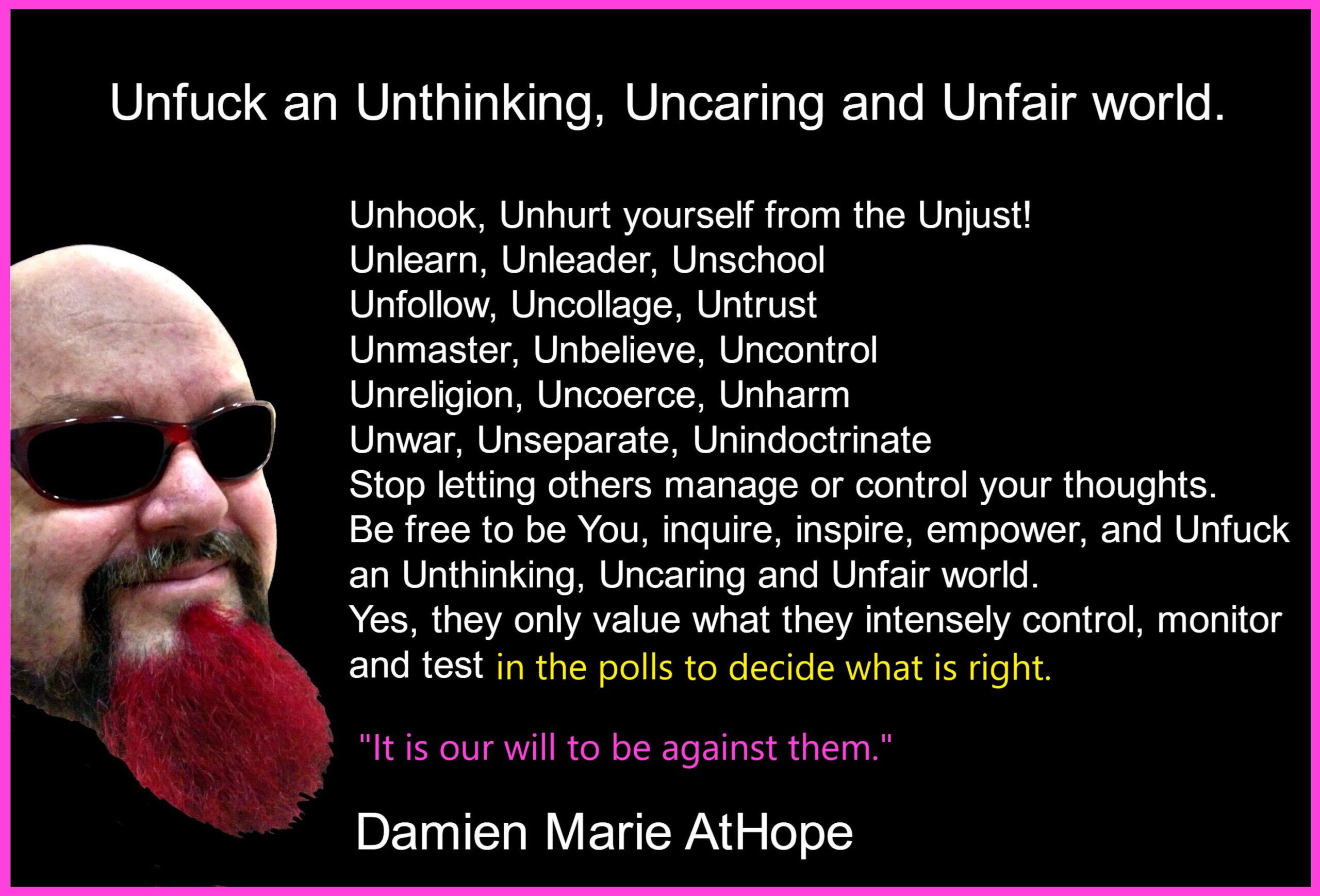
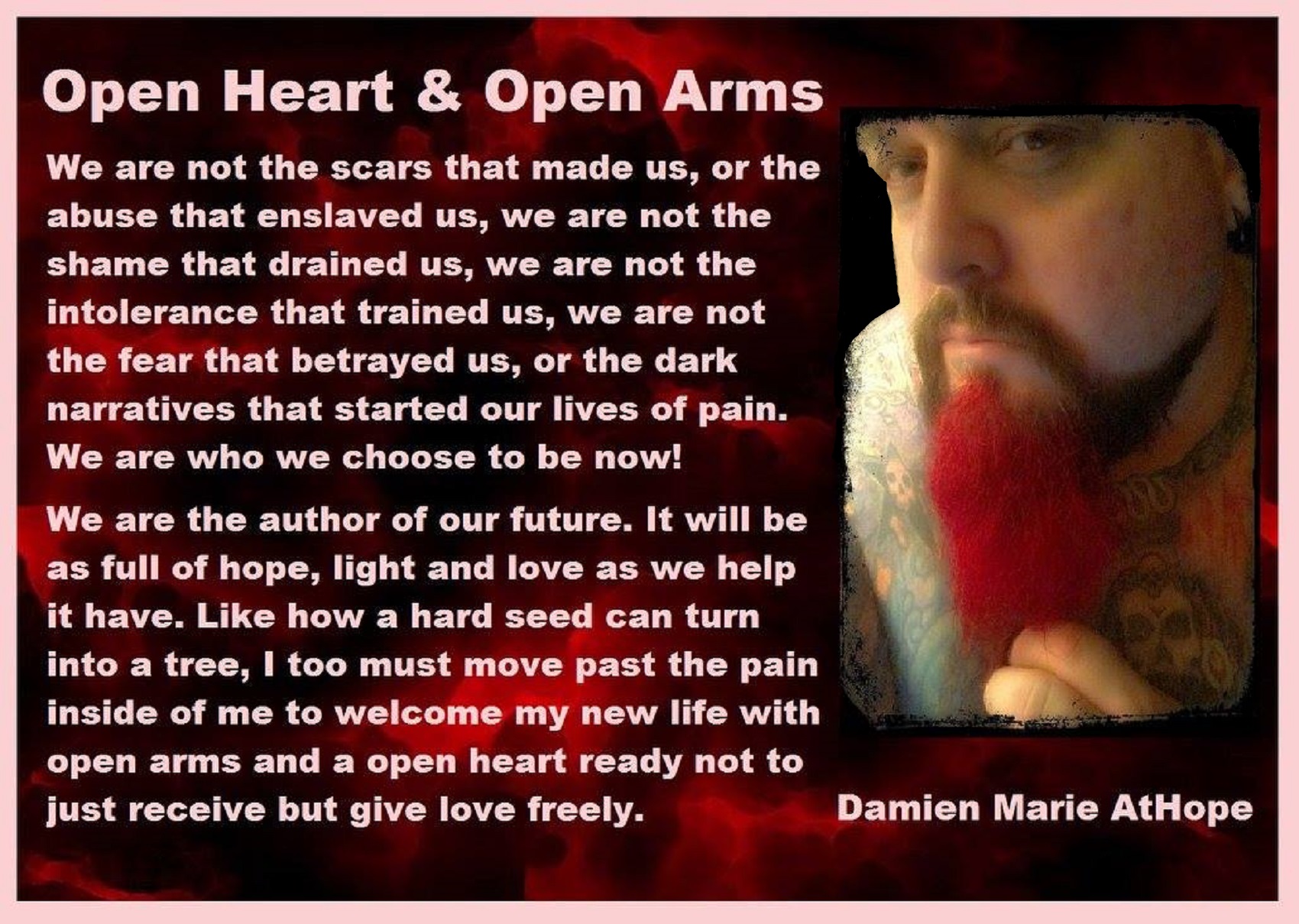
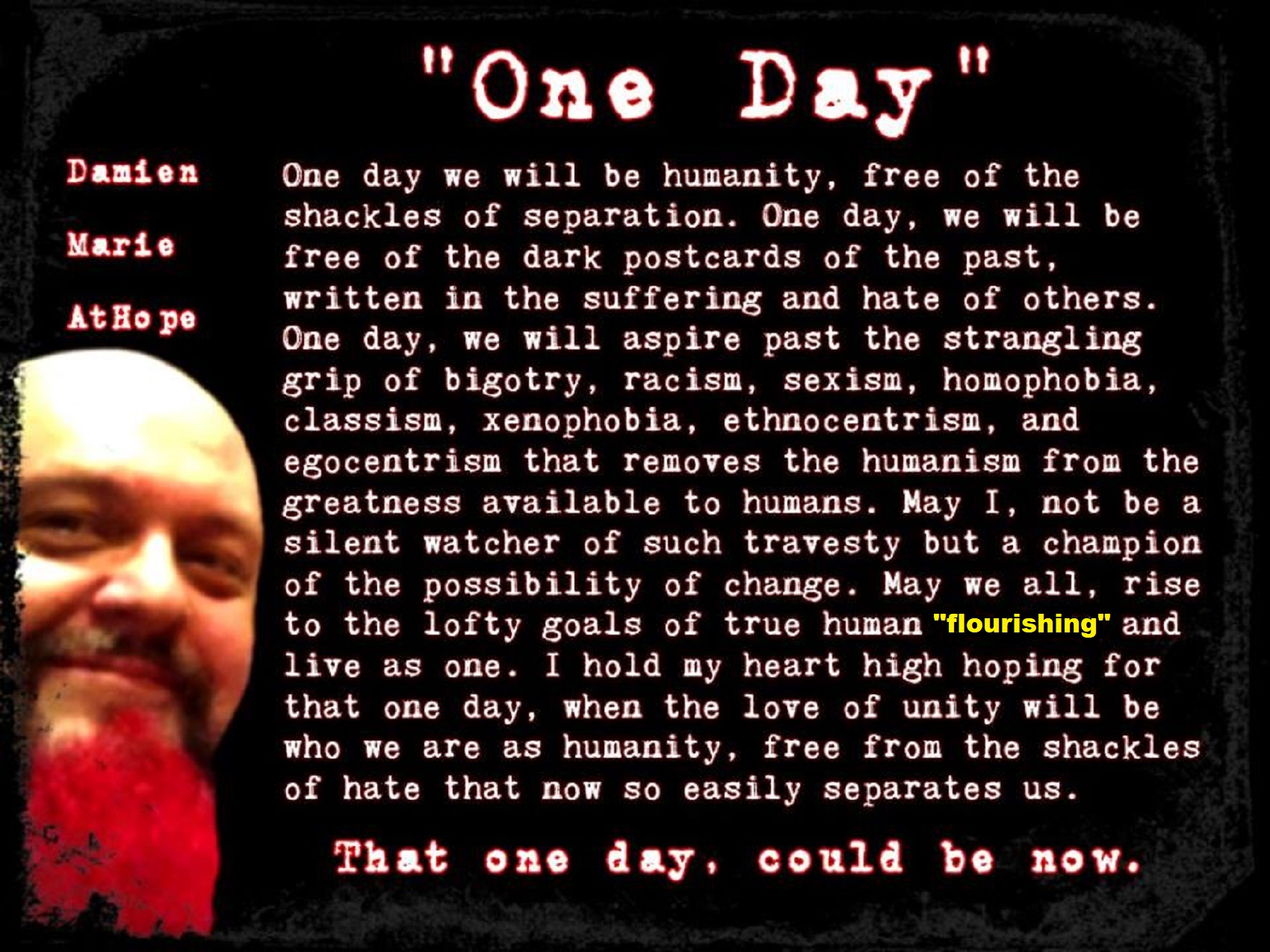
I am Anti-Classist: addressing styles of anarchism and socialism, power to the people: VIEDO
Cory Johnston: https://damienmarieathope.com/2021/04/cory-johnston-mind-of-a-skeptical-leftist/?v=32aec8db952d
Cory Johnston: Mind of a Skeptical Leftist @Skepticalcory
The Mind of a Skeptical Leftist By Cory Johnston: “Promoting critical thinking, social justice, and left-wing politics by covering current events and talking to a variety of people. Cory Johnston has been thoughtfully talking to people and attempting to promote critical thinking, social justice, and left-wing politics.”
He needs our support. We rise by helping each other.
Damien Marie AtHope (“At Hope”) Axiological Atheist, Anti-theist, Anti-religionist, Secular Humanist. Rationalist, Writer, Artist, Poet, Philosopher, Advocate, Activist, Psychology, and Armchair Archaeology/Anthropology/Historian.
Damien is interested in: Freedom, Liberty, Justice, Equality, Ethics, Humanism, Science, Atheism, Antiteism, Antireligionism, Ignosticism, Left-Libertarianism, Anarchism, Socialism, Mutualism, Axiology, Metaphysics, LGBTQI, Philosophy, Advocacy, Activism, Mental Health, Psychology, Archaeology, Social Work, Sexual Rights, Marriage Rights, Woman’s Rights, Gender Rights, Child Rights, Secular Rights, Race Equality, Ageism/Disability Equality, Etc. And a far-leftist, “Anarcho-Humanist.”
I am Anti-Classist
I am an anti-classist more than just a socialist or anarchist, though I think they both, even if varied in such types of political theorizing would agree that classism is a major problem. I see this vile problem of classism in almost all other social problems, it is an ever-continuing hidden harm, too many seem to accept, ignore, deny, or don’t care, as well as some in society sadly seem to welcome it. To me, classism is a scourge on humanity everywhere all the time. I despise classism and its harm to true humanity flourishing.
What Is Classism?
“Classism is differential treatment based on social class or perceived social class. Classism is the systematic oppression of subordinated class groups to advantage and strengthen the dominant class groups. It’s the systematic assignment of characteristics of worth and ability based on social class.” ref
“That includes: individual attitudes and behaviors; systems of policies and practices that are set up to benefit the upper classes at the expense of the lower classes, resulting in drastic income and wealth inequality; the rationale that supports these systems and this unequal valuing; and the culture that perpetuates them.” ref
“Classism is held in place by a system of beliefs and cultural attitudes that ranks people according to economic status, family lineage, job status, level of education, and other divisions.” ref
“Class discrimination, also known as classism, is prejudice or discrimination on the basis of social class. It includes individual attitudes, behaviors, systems of policies, and practices that are set up to benefit the upper class at the expense of the lower class.” ref
“Social class refers to the grouping of individuals in a hierarchy based on wealth, income, education, occupation, and social network.” ref
“Class structures existed in a simplified form in pre-agricultural societies, but it has evolved into a more complex and established structure following the establishment of permanent agriculture-based civilizations with a food surplus.” ref
Classism Definitions:
“Class: Relative social rank in terms of income, wealth, status, and/or power.” ref
“Classism: The institutional, cultural, and individual set of practices and beliefs that assign differential value to people according to their socio-economic class; and an economic system that creates excessive inequality and causes basic human needs to go unmet.” ref
“Class Identity: A label for one category of class experience, such as ruling class, owning class, middle class, working-class, and lower class.” ref
“Ruling Class: The stratum of people who hold positions of power in major institutions of the society.” ref
“Owning Class/Rich: The stratum of families who own income-producing assets sufficient to make paid employment unnecessary.” ref
“Middle Class: The stratum of families for whom breadwinners’ higher education and/or specialized skills brings higher income and more security than those of working-class people.” ref
“Upper-Middle Class: The portion of the middle class with higher incomes due to professional jobs and/or investment income.” ref
“Lower-Middle Class: The portion of the middle class with lower and less stable incomes due to lower-skilled or unstable employment.” ref
“Working Class: The stratum of families whose income depends on hourly wages for labor.” ref
“Lower Class/Poor: The stratum of families with incomes insufficient to meet basic human needs.” ref
“Individual Classism: This term refers to classism on a personal or individual level, either in behavior or attitudes, either conscious and intentional or unconscious and unintentional.” ref
“Institutional Classism: This term refers to the ways in which conscious or unconscious classism is manifest in the various institutions of our society.” ref
“Cultural Classism: This term refers to the ways in which classism is manifest through our cultural norms and practices. It can often be found in the ideology behind something.” ref
“Internalized Classism: Acceptance and justification of classism by working-class and poor people, such as feelings of inferiority to higher-class people, feelings of superiority to people lower on the class spectrum than oneself, hostility and blame toward other working-class or poor people, and beliefs that classist institutions are fair.” ref
“Privilege: One of the many tangible or intangible unearned advantages of higher-class status.” ref
“Classism started to be practiced around the 18th century. Segregation into classes was accomplished through observable traits (such as race or profession) that were accorded varying status and privileges. Feudal classification systems might include merchant, serf, peasant, warrior, priestly, and noble classes. Rankings were far from invariant with the merchant class in Europe outranking the peasantry while merchants were explicitly inferior to peasants during the Tokugawa Shogunate in Japan. Modern classism, with less rigid class structures, is harder to identify. In a professional association posting, psychologist Thomas Fuller-Rowell states, “Experiences of [class] discrimination are often subtle rather than blatant, and the exact reason for unfair treatment is often not clear to the victim.” ref
Classism or Class discrimination, Intersections with Other Systems of Oppression
“Socioeconomic, racial/ethnic and gender inequalities in academic achievement have been widely reported in the United States, but how these three axes of inequality intersect to determine academic and non-academic outcomes among school-aged children is not well understood. The term classism can refer to personal prejudice against lower classes as well as to institutional classism, just as the term racism can refer either strictly to personal prejudice or to institutional racism.” ref
“The latter has been defined as “the ways in which conscious or unconscious classism is manifest in the various institutions of our society. As with social classes, the difference in social status between people determines how they behave toward each other and the prejudices they likely hold toward each other. People of higher status do not generally mix with lower-status people and often are able to control other people’s activities by influencing laws and social standards.” ref
“The term “interpersonal” is sometimes used in place of “personal” as in “institutional classism (versus) interpersonal classism” and terms such as “attitude” or “attitudinal” may replace “interpersonal” as contrasting with institutional classism as in the Association of Magazine Media’s definition of classism as “any attitude or institutional practice which subordinates people due to income, occupation, education and/or their economic condition.” ref
“Classism is also sometimes broken down into more than two categories as in “personal, institutional and cultural” classism. It is common knowledge in sociolinguistics that meta-social language abounds in lower registers, thus the slang for various classes or racial castes.” ref
“Class discrimination can be seen in many different forms of media such as television shows, films, and social media. Classism is also systemic, and its implications can go unnoticed in the media that is consumed by society. Class discrimination in the media displays the knowledge of what people feel and think about classism. When seeing class discrimination in films and television shows, people are influenced and believe that is how things are in real life, for whatever class is being displayed.” ref
“Children can be exposed to class discrimination through movies, with a large pool of high-grossing G-rated movies portraying classism in various contexts. Children may develop biases at a young age that shape their beliefs throughout their lifetime, which would demonstrate the issues with class discrimination being prevalent in the media. Media is a big influence on the world today, with that something such as classism is can be seen in many different lights. Media plays an important role in how certain groups of people are perceived, which can make certain biases stronger.” ref
“Usually, the lower-income people are displayed in the media as dirty, lack of education and manners, and homeless. People can use the media to learn more about different social classes or use the media, such as social media to influence others on what they believe. In some cases, people who are in a social class that is portrayed negatively by the media can be affected in school and social life as “[t]eenagers who grew up in poverty reported higher levels of discrimination, and the poorer the teens were, the more they experienced discrimination.” ref
“Class” is a subject of analysis for sociologists, political scientists, anthropologists, and social historians. However, there is not a consensus on a definition of “class” and the term has a wide range of sometimes conflicting meanings. Some people argue that due to social mobility, class boundaries do not exist. In common parlance, the term “social class” is usually synonymous with “socio-economic class”, defined as “people having the same social, economic, cultural, political or educational status”, e.g., “the working class“; “an emerging professional class”. However, academics distinguish social class and socioeconomic status, using the former to refer to one’s relatively stable sociocultural background and the latter to refer to one’s current social and economic situation which is consequently more changeable over time.” ref
“The precise measurements of what determines social class in society have varied over time. Karl Marx thought “class” was defined by one’s relationship to the means of production (their relations of production). His understanding of classes in modern capitalist society is that the proletariat work but do not own the means of production, and the bourgeoisie, those who invest and live off the surplus generated by the proletariat’s operation of the means of production, do not work at all. This contrasts with the view of the sociologist Max Weber, who argued “class” is determined by economic position, in contrast to “social status” or “Stand” which is determined by social prestige rather than simply just relations of production. The term “class” is etymologically derived from the Latin classis, which was used by census takers to categorize citizens by wealth in order to determine military service obligations.” ref
“In the late 18th century, the term “class” began to replace classifications such as estates, rank, and orders as the primary means of organizing society into hierarchical divisions. This corresponded to a general decrease in significance ascribed to hereditary characteristics and an increase in the significance of wealth and income as indicators of position in the social hierarchy.” ref
Consequences of class position
“A person’s socioeconomic class has wide-ranging effects. It can impact the schools they are able to attend, their health, the jobs open to them, when they exit the labor market, whom they may marry, and their treatment by police and the courts.” ref
“Angus Deaton and Anne Case have analyzed the mortality rates related to the group of white, middle-aged Americans between the ages of 45 and 54 and its relation to class. There has been a growing number of suicides and deaths by substance abuse in this particular group of middle-class Americans. This group also has been recorded to have an increase in reports of chronic pain and poor general health. Deaton and Case came to the conclusion from these observations that because of the constant stress that these white, middle-aged Americans feel fighting poverty and wavering between the middle and lower classes, these strains have taken a toll on these people and affected their whole bodies.” ref
“Social classifications can also determine the sporting activities that such classes take part in. It is suggested that those of an upper social class are more likely to take part in sporting activities, whereas those of a lower social background are less likely to participate in sport. However, upper-class people tend to not take part in certain sports that have been commonly known to be linked with the lower class.” ref
“A person’s social class has a significant impact on their educational opportunities. Not only are upper-class parents able to send their children to exclusive schools that are perceived to be better, but in many places, state-supported schools for children of the upper class are of a much higher quality than those the state provides for children of the lower classes. This lack of good schools is one factor that perpetuates the class divide across generations.” ref
“A person’s social class has a significant impact on their physical health, their ability to receive adequate medical care and nutrition, and their life expectancy. Lower-class people experience a wide array of health problems as a result of their economic status. They are unable to use health care as often and when they do it is of lower quality, even though they generally tend to experience a much higher rate of health issues. Lower-class families have higher rates of infant mortality, cancer, cardiovascular disease, and disabling physical injuries. Additionally, poor people tend to work in much more hazardous conditions, yet generally have much less (if any) health insurance provided for them, as compared to middle- and upper-class workers.” ref
“The conditions at a person’s job vary greatly depending on class. Those in the upper-middle class and middle class enjoy greater freedoms in their occupations. They are usually more respected, enjoy more diversity, and are able to exhibit some authority. Those in lower classes tend to feel more alienated and have lower work satisfaction overall. The physical conditions of the workplace differ greatly between classes. While middle-class workers may “suffer alienating conditions” or “lack of job satisfaction”, blue-collar workers are more apt to suffer alienating, often routine, work with obvious physical health hazards, injury, and even death.” ref
“In the UK, a 2015 government study by the Social Mobility Commission suggested the existence of a “glass floor” in British society preventing those who are less able, but who come from wealthier backgrounds, from slipping down the social ladder. The report proposed a 35% greater likelihood of less able, better-off children becoming high earners than bright poor children.” ref
Class conflict
Further information: Class conflict
“Class conflict, frequently referred to as “class warfare” or “class struggle”, is the tension or antagonism which exists in society due to competing for socioeconomic interests and desires between people of different classes. And for Marx, the history of class society was a history of class conflict.” ref
“Marx pointed to the successful rise of the bourgeoisie and the necessity of revolutionary violence—a heightened form of class conflict—in securing the bourgeois rights that supported the capitalist economy. Marx believed that the exploitation and poverty inherent in capitalism were a pre-existing form of class conflict. Marx believed that wage laborers would need to revolt to bring about a more equitable distribution of wealth and political power.” ref
Classless society
Further information: Classless society
“A “classless” society is one in which no one is born into a social class. Distinctions of wealth, income, education, culture, or social network might arise and would only be determined by individual experience and achievement in such a society. Since these distinctions are difficult to avoid, advocates of a classless society (such as anarchists and communists) propose various means to achieve and maintain it and attach varying degrees of importance to it as an end in their overall programs/philosophy.” ref
Relationship between ethnicity and class
Further information: Racial inequality
“Race and other large-scale groupings can also influence class standing. The association of particular ethnic groups with class statuses is common in many societies, and is linked with race as well. Class and ethnicity can impact a persons, or communities, Socioeconomic standing, which in turn influences everything including job availability and the quality of available health and education.” ref
As a result of conquest or internal ethnic differentiation, a ruling class is often ethnically homogenous and particular races or ethnic groups in some societies are legally or customarily restricted to occupying particular class positions. Which ethnicities are considered as belonging to high or low classes varies from society to society.” ref
“In modern societies, strict legal links between ethnicity and class have been drawn, such as the caste system in Africa, apartheid, the position of the Burakumin in Japanese society, and the casta system in Latin America.” ref
Process of Class Stratification
“Class stratification is a form of social stratification in which a society is separated into parties whose members have different access to resources and power. An economic, natural, cultural, religious, interests and ideal rift usually exists between different classes.” ref
“In the early stages of class stratification, the majority of members in a given society have similar access to wealth and power, with only a few members displaying noticeably more or less wealth than the rest.” ref
“As time goes on, the largest share of wealth and status can begin to concentrate around a small number of the population. When wealth continues to concentrate, pockets of society with significantly less wealth may develop, until a sharp imbalance between rich and poor is created. As members of a society spread out from one another economically, classes are created.” ref
“When a physical gap is added, a cultural rift between the classes comes into existence, an example being the perception of the well-mannered, “cultured” behavior of the rich, versus the “uncivilized” behavior of the poor. With the cultural divide, chances for classes to intermingle become less and less likely, and mythos becomes more and more common between them (i.e. “the wrong side of the railroad tracks”). The lower class loses more of its influence and wealth as the upper class gains more influence and wealth, further dividing the classes from one another.” ref
Class Schema
“Social class is usually regarded as being conceived of as sets of positions rather than as individuals who happen to fill them at any particular time. Class structure is the “empty spaces” that persons occupy without altering the shape of the class structure.” ref
“Erik Olin Wright produced class schemata, in attempts to retain a Marxist approach to class analysis. In Wright’s first schema he states that in capitalism simple production exists alongside the capitalist mode of production. In this schema the bourgeoisie, the self-employed working who engage in simple production are one class. In the model there are two distinctive classes, the bourgeoisie, and the proletariat. The bourgeoisie owns the means of production, and the proletariat are the exploited workers. Both of these classes can be broken down into six classes that make up Wright’s first schema.” ref
“The supervisors and managers are in a contradictory class because they dominate over the proletariat and yet they are still dominated by the bourgeoisie. The small employers are both petty bourgeois and bourgeois; and the semi-autonomous employees while they do not own the means of production, they benefit from having more autonomy over their work than the normal proletariat. These classes are based upon exploitation and domination. Exploitation exists between those who own the means of production and those who do not. Domination is measured according to the amount of autonomy that can be exercised by the workers and to which extent they are supervised.” ref
“Wright’s second schema involve a 12-class schema and is based upon exploitation. In the second schemata exploitation has three dimensions: ownership of the means of production, ownership of organization assets that permit control and coordination of technical processes of production, and ownership of skills or credentials.” ref
“John Goldthorpe‘s class schema is to differentiate positions within labor markets and production units, or more specifically to differentiate such positions in terms of the employment relations that they entail. Goldthorpe schema distinguishes the employers, the self-employed, and employees. Within the group of employees eleven classes are defined on the basis of the employment relationship they enjoy. The aim of the schema is to group occupational title/employment relations, and the employment relationships joined by given combinations may differ cross-nationally.” ref
“As the theories relate to class stratification the common characteristic shared by the actors involve the position they occupy in relations defined by labor markets and productive processes. Class has often been defined as the significant determinant of life chances. The deliberate acts of individual actors are undertaken from a position of social power which is determined by class membership. The resources an individual possesses and the constraints they face and the course of action they take leads to having a higher probability of being undertaken than others. These processes lead to class position becoming a powerful predictor of many kinds of behavior.” ref
Class and Race
“It can be argued that segregation between black and white ethnic groups is so strong in some countries that they are different classes, and thus that segregation is a form of class stratification. Although there is a definite divide in some countries between races, those countries will also have poor people of the “upper class” ethnicity.” ref
- A Different Kind of Atheist: Axiological, Methodological, Anarchist, Universal Ethicist, Realist, and Rationalist
- Interview with Anarchist and Firebrand Atheist Courtney Connatser
- My Atheistic (socialist-anarchist) Humanism?
- Yes, YOU too, can be an Anarcho-Humanist?
- I am an Anarchist and Strive to Fight Injustice
- Climate change and other crimes of capitalism. A green anarchist future?
- I am a “Real Anarchist” not an “Anarcho-Capitalist”
- Anarcho-Humanist sharing “Non-Anarchist Memes,” to Fight Bigotry?
- White Bigotry and Sexism started 7,000 years ago?
- Trump Troll and my Anarchist Atheist Response?
- Yes, I am Actually an Atheist Anarchist
- Atheist Anarchists Discussion
- Skepticism is Interesting: Good, Bad, and Implausibility
- Green Anarchism, Eco-Anarchism, and Anarcho-Naturism?
- I Support the World Following the Social Ways of the Animists in Africa as they have Beautiful Humanity.
- Street-Kid Damien, Was He Really a BAD Kid?
- The “EGO-Prison” of Faith and its Intentionally Untested “desired-beliefs”
- Evolution of human skin color, white-skin is really under 10,000 years old?
- Less Imperialism Worship in Prehistory/History, PLEASE
- God-talk has always just been the master talking out of your mouth.


To Damien, anarchism means equality ethics, non-hierarchy classless society, and mutualist aid in free associations community non-state direct democracy federation of communities, helping people, and supported by the people for the people, in solidarity and humanity. To Damien, anarchism means one wishes all people across the earth true human flourishing to their greatness: self-esteem, self-ownership, self-leadership, self-efficiency, self-empowerment, self-love, and self-mastery. To Damien, all our actions require thoughtful action and should not be done unthinkingly or unjustly. To Damien, we are our best when we remember to value ourselves and others and our worse when we forget to value ourselves and others.
And states with their elite leaders and hierarchy structures violate this humanity equality in Damien’s conceptions of anarchism. To Damien, we need the humanity emancipation of self-sovereignty and non-hierarchy interactions in the home in society and any government type interactions something like relationship anarchism to be the norm throughout society at all levels not simply non-statism as some think anarchism is limited to.
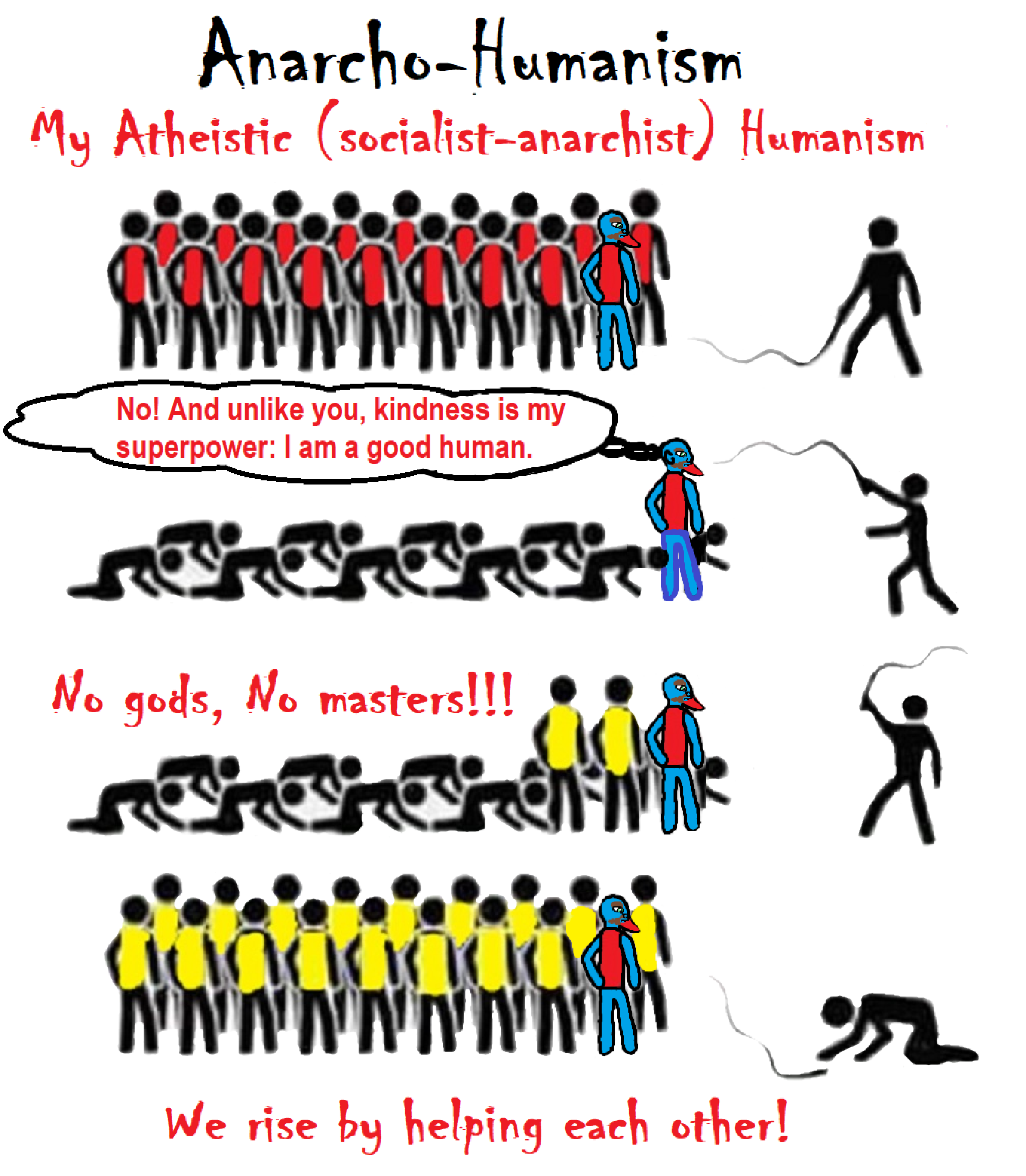
Anarchism?
“Anarchism is a political philosophy and movement that is skeptical of authority and rejects all involuntary, coercive forms of hierarchy. Anarchism calls for the abolition of the state, which it holds to be undesirable, unnecessary, and harmful. As a historically far-left movement, it is usually described alongside libertarian Marxism as the libertarian wing (libertarian socialism) of the socialist movement and has a strong historical association with anti-capitalism and socialism.” ref
“The history of anarchy goes back to prehistory, when humans arguably lived in anarchic societies long before the establishment of formal states, realms, or empires. With the rise of organized hierarchical bodies, skepticism toward authority also rose, but it was not until the 19th century that a self-conscious political movement emerged. During the latter half of the 19th and the first decades of the 20th century, the anarchist movement flourished in most parts of the world and had a significant role in workers’ struggles for emancipation. Various anarchist schools of thought formed during this period. Anarchists have taken part in several revolutions, most notably in the Spanish Civil War, whose end marked the end of the classical era of anarchism. In the last decades of the 20th and into the 21st century, the anarchist movement has been resurgent once more.” ref
“Anarchism employs a diversity of tactics in order to meet its ideal ends which can be broadly separated into revolutionary and evolutionary tactics. There is a significant overlap between the two which are merely descriptive. Revolutionary tactics aim to bring down authority and state, having taken a violent turn in the past. Evolutionary tactics aim to prefigure what an anarchist society would be like. Anarchist thought, criticism, and praxis have played a part in diverse areas of human society. Criticisms of anarchism include claims that it is internally inconsistent, violent, or utopian.” ref
“Beyond the specific factions of anarchist movements which constitute political anarchism lies philosophical anarchism which holds that the state lacks moral legitimacy, without necessarily accepting the imperative of revolution to eliminate it. A component especially of individualist anarchism, philosophical anarchism may tolerate the existence of a minimal state, but it argues that citizens have no moral obligation to obey government when it conflicts with individual autonomy. Anarchism pays significant attention to moral arguments since ethics have a central role in anarchist philosophy. Anarchism’s emphasis on anti-capitalism, egalitarianism, and for the extension of community and individuality sets it apart from anarcho-capitalism and other types of economic libertarianism.” ref
“Anarchism is usually placed on the far-left of the political spectrum. Much of its economics and legal philosophy reflect anti-authoritarian, anti-statist, libertarian, and radical interpretations of left-wing and socialist politics such as collectivism, communism, individualism, mutualism, and syndicalism, among other libertarian socialist economic theories. As anarchism does not offer a fixed body of doctrine from a single particular worldview, many anarchist types and traditions exist and varieties of anarchy diverge widely.” ref
“One reaction against sectarianism within the anarchist milieu was anarchism without adjectives, a call for toleration and unity among anarchists first adopted by Fernando Tarrida del Mármol in 1889 in response to the bitter debates of anarchist theory at the time. Belief in political nihilism has been espoused by anarchists. Despite the separation, the various anarchist schools of thought are not seen as distinct entities, but rather as tendencies that intermingle and are connected through a set of uniform principles such as individual and local autonomy, mutual aid, network organization, communal democracy, justified authority, and decentralization.” ref
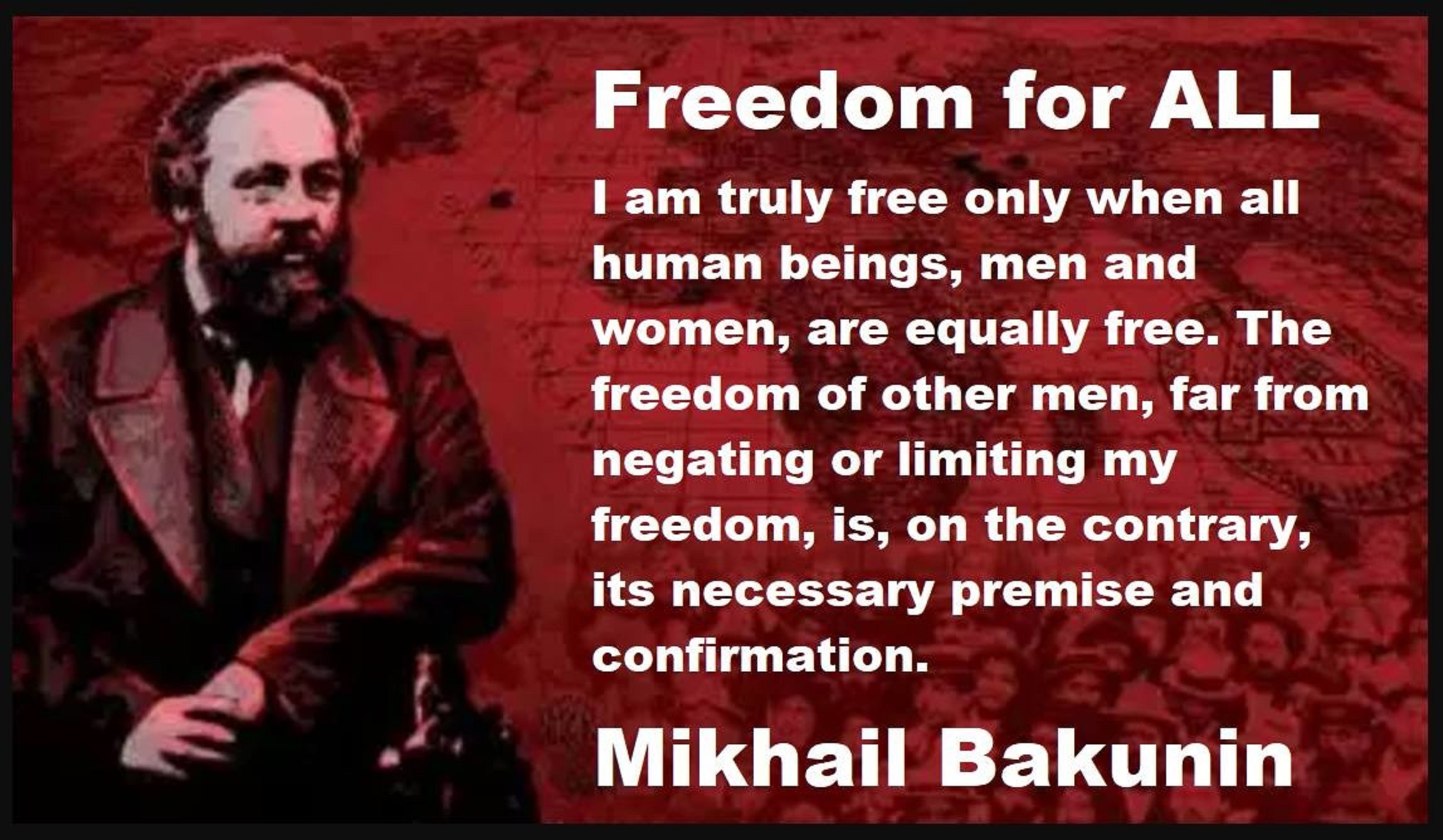

Socialism
“Socialism is a political, social, and economic philosophy encompassing a range of economic and social systems characterized by social ownership of the means of production. It includes the political theories and movements associated with such systems. Social ownership can be public, collective, cooperative, or of equity. While no single definition encapsulates the many types of socialism, social ownership is the one common element. The types of socialism vary based on the role of markets and planning in resource allocation, on the structure of management in organizations, and socialists disagree on whether government, particularly existing government, is the correct vehicle for change.” ref
“Socialist systems are divided into non-market and market forms. Non-market socialism substitutes factor markets and money with integrated economic planning and engineering or technical criteria based on calculation performed in-kind, thereby producing a different economic mechanism that functions according to different economic laws and dynamics than those of capitalism. A non-market socialist system eliminates the inefficiencies and crises traditionally associated with capital accumulation and the profit system in capitalism. The socialist calculation debate, originated by the economic calculation problem, concerns the feasibility and methods of resource allocation for a planned socialist system.” ref
“By contrast, market socialism retains the use of monetary prices, factor markets, and in some cases the profit motive, with respect to the operation of socially owned enterprises and the allocation of capital goods between them. Profits generated by these firms would be controlled directly by the workforce of each firm or accrue to society at large in the form of a social dividend. Anarchism and libertarian socialism oppose the use of the state as a means to establish socialism, favoring decentralization above all, whether to establish non-market socialism or market socialism.” ref
“Socialist politics has been both internationalist and nationalist in orientation; organized through political parties and opposed to party politics; at times overlapping with trade unions and at other times independent and critical of them; and present in both industrialized and developing nations. Social democracy originated within the socialist movement, supporting economic and social interventions to promote social justice. While nominally retaining socialism as a long-term goal, since the post-war period it has come to embrace a Keynesian mixed economy within a predominantly developed capitalist market economy and liberal democratic polity that expands state intervention to include income redistribution, regulation, and a welfare state. Economic democracy proposes a sort of market socialism, with more democratic control of companies, currencies, investments, and natural resources.” ref
“The socialist political movement includes a set of political philosophies that originated in the revolutionary movements of the mid-to-late 18th century and out of concern for the social problems that were associated with capitalism. By the late 19th century, after the work of Karl Marx and his collaborator Friedrich Engels, socialism had come to signify opposition to capitalism and advocacy for a post-capitalist system based on some form of social ownership of the means of production. By the 1920s, communism and social democracy had become the two dominant political tendencies within the international socialist movement, with socialism itself becoming the most influential secular movement of the 20th century. Socialist parties and ideas remain a political force with varying degrees of power and influence on all continents, heading national governments in many countries around the world. Today, many socialists have also adopted the causes of other social movements such as environmentalism, feminism, and progressivism.” ref
“While the emergence of the Soviet Union as the world’s first nominally socialist state led to socialism’s widespread association with the Soviet economic model, some economists and intellectuals argued that in practice the model functioned as a form of state capitalism or a non-planned administrative or command economy. Academics, political commentators, and other scholars sometimes refer to Western Bloc countries which have been democratically governed by socialist parties such as Britain, France, Sweden, and Western social-democracies in general as democratic socialist.” ref


Communism
“Communism (from Latin communis, ‘common, universal’) is a far-left sociopolitical, philosophical, and economic ideology and current within the socialist movement whose goal is the establishment of a communist society, namely a socioeconomic order centered around common ownership of the means of production, distribution, and exchange—allocating products to everyone in the society. A communist society also involves the absence of social classes, money, and the state. Communists often seek a voluntary state of self-governance, but disagree on the means to this end. This reflects a distinction between a more libertarian approach of communization, revolutionary spontaneity, and workers’ self-management, and a more vanguardist or communist party-driven approach through the development of a constitutional socialist state followed by Friedrich Engels‘ withering away of the state.” ref
“Variants of communism have been developed throughout history, including anarcho-communism and Marxist schools of thought, among others. Communism includes a variety of schools of thought which broadly include Marxism, Leninism, and libertarian communism as well as the political ideologies grouped around both. All of these different ideologies share the analysis that the current order of society stems from capitalism, its economic system, and mode of production, namely that in this system there are two major social classes, the relationship between these two classes is exploitative, and that this situation can only ultimately be resolved through a social revolution. The two classes are the proletariat (the working class), who make up the majority of the population within society and must work to survive, and the bourgeoisie (the capitalist class), a small minority who derives profit from employing the working class through private ownership of the means of production. According to this analysis, revolution would put the working class in power and in turn, establish common ownership of property which is the primary element in the transformation of society towards a communist mode of production.” ref
“In the 20th century, ostensibly Communist governments espousing Marxism–Leninism and its variants came into power in parts of the world, first in the Soviet Union with the Russian Revolution of 1917, and then in portions of Eastern Europe, Asia, and a few other regions after World War II. Along with social democracy, communism became the dominant political tendency within the international socialist movement by the early 1920s. During most of the 20th century, around one-third of the world’s population lived under communist governments. These governments were characterized by one-party rule and suppression of opposition and dissent. With the dissolution of the Soviet Union in 1991, several communist governments repudiated or abolished communism altogether. Afterwards, only a small number of communist governments remained, namely China, Cuba, Laos, and Vietnam.” ref
“While the emergence of the Soviet Union as the world’s first nominally Communist state led to communism’s widespread association with the Soviet economic model, several scholars posit that in practice, the model functioned as a form of state capitalism. Public memory of 20th-century Communist states has been described as “a battleground” between the communist sympathetic political left and the anti-communist political right. Many authors have written about excess deaths under Communist states and mortality rates, such as excess mortality in the Soviet Union under Joseph Stalin.” ref
Social/Socialist Anarchism
“Social anarchism, sometimes referred to as red anarchism, is the branch of anarchism that sees individual freedom as interrelated with mutual aid. Social anarchist thought emphasizes community and social equality as complementary to autonomy and personal freedom. It attempts to accomplish this balance through freedom of speech, which is maintained in a decentralized federalism, with freedom of interaction in thought and subsidiarity. Subsidiarity is best defined as “that one should not withdraw from individuals and commit to the community what they can accomplish by their own enterprise and industry” and that “[f]or every social activity ought of its very nature to furnish help to the members of the body social, and never destroy and absorb them”, or the slogan “Do not take tools out of people’s hands.” ref
“Social anarchism has been the dominant form of anarchism. As a label or term, social anarchism is used in contrast to individualist anarchism to describe the theory that places an emphasis on the communitarian and cooperative aspects in anarchist theory while also opposing authoritarian forms of communitarianism associated with groupthink and collective conformity, favoring a reconciliation between individuality and sociality. Self-determination, worker’s self-management, education, and empowerment are all emphasized in social anarchism, while illegitimate authority is removed through inspection and vigilance. A do-it-yourself mentality is combined with educational efforts within the social realm. Social anarchism advocates the conversion and use of a portion of present-day and future productive private property to be made into social property that can be used as an alternative to capitalist production and exploitative wage labor. Social anarchist thought advocates social property to offer individual empowerment through easier access to tools and a sharing of the commons while retaining respect for personal property.” ref
“Social anarchism is considered an umbrella term that mainly refers to the post-capitalist economic models of anarcho-communism, collectivist anarchism, and sometimes mutualism. It can also include non-state controlled federated guild socialist, dual power industrial democracy and economic democracy, or federated worker cooperatives and workers’ and consumers’ councils replacing much of the present state system whilst retaining basic rights. In addition, it includes the trade union approach of anarcho-syndicalism, the social struggle strategies of platformism and specifism, and the environmental philosophy of social ecology. As a term, social anarchism overlaps with libertarianism, libertarian socialism, and left-libertarianism, emerging in the late 19th century as a distinction from individualist anarchism after anarcho-communism replaced collectivist anarchism as the dominant tendency.” ref
“Social anarchism has been described as the collectivist or socialist wing of anarchism as well as representing socialist-aligned forms of anarchism, being contrasted with the liberal-socialist wing represented by individualist anarchism. Nonetheless, several of those collectivist or communist anarchists have supported their theories on radical individualist grounds, seeing collectivism or communism as the best social system for the realization of individual freedom. The very idea of an individualist–socialist divide is also contested as individualist anarchism is largely socialistic and influenced each other. Carl Landauer summarized the difference between individualist and social anarchists by stating that “the communist anarchists also do not acknowledge any right to society to force the individual. They differ from the anarchistic individualists in their belief that men, if freed from coercion, will enter into voluntary associations of a communistic type, while the other wing believes that the free person will prefer a high degree of isolation.” ref


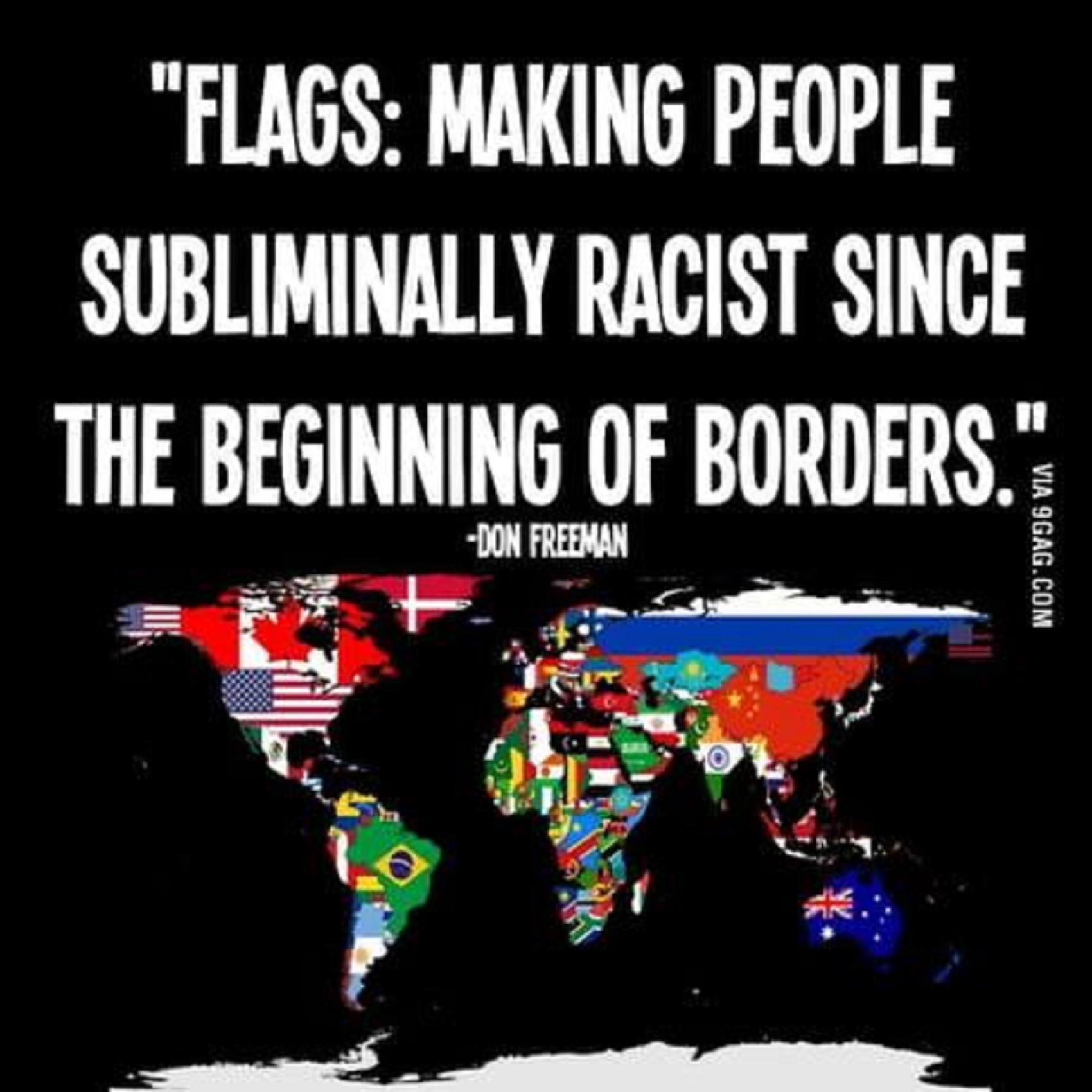
“The 13 Richest US Politicians in Office” https://www.businessinsider.com/richest-politicians-in-the-us-2018-4?amp
So there are fewer billionaires in the American capitalist government than in the Chinese government, said to be only communist??? Yea, I don’t buy it.
So the problem is not socialist or communist it is still the evil of capitalism infecting the good communist order. And for some to not grasp this is odd to me. And all the crime laid on socialists is often the crime of greed and power. Like asking to rule for life as seen in communist-controlled countries. The dictatorship communist persuasion makes me sick. I want all power to be with the people not more so-called elite living on wealth and the rest live in struggle. I welcome equality communist ideas, not inequality communist ideas.
Xi Jinping Chinese Communist Chairman (leader/dictator)
“He has often been described as a dictator or an authoritarian leader by political and academic observers, citing an increase of censorship and mass surveillance, a deterioration in human rights, the cult of personality developing around him, and the removal of term limits for the leadership under his tenure.” ref
Is he an equal person to all others in China? I think not. lol
“Want to rub elbows with the rich? Go to China, where the country’s parliament could pass for an elite club of the world’s richest, where about 100 delegates are U.S. dollar billionaires. The richest 209 parliament delegates are each worth more than 2 billion yuan ($300 million) – their combined wealth is equivalent to the annual GDPs of Belgium and Sweden, using World Bank figures on GDP for those countries.” ref
“They made their fortune in everything from property to energy, according to data from the Hurun Report, which publishes the China Rich List. A bunch of tech entrepreneurs sit at the top of the list, including Pony Ma of Tencent, Robin Li of Baidu, and Lei Jun of Xiaomi. The names are among delegates gathering for their annual meeting in Beijing starting on Friday, a roughly weeklong affair that’s big on posturing, but small on legislating. Delegates always vote to approve proposals from the ruling Communist Party.” ref
“By comparison, the U.S. doesn’t have a single billionaire in Congress. The wealthiest member, California Republican Darrell Issa, is worth around $440 million, according to the Center for Responsive Politics. President Donald Trump claims he is a billionaire, though he has refused to release his income taxes to prove it – breaking with a practice followed by U.S. leaders since Richard Nixon.” ref
“Still, China’s parliament — made up of the National People’s Congress and the Chinese People’s Political Consultative Conference – includes delegates from a wide variety of backgrounds, including those who benefited handsomely as China’s economy has grown into the world’s second-largest.
“But there’s another reason to show up — these sessions of China’s “rubber stamp” parliament are a chance to see and be seen. In a country where business and commerce are tightly restricted, a chance to rub elbows with top Communist Party brass could mean the difference between boom and bust.” ref
“In 2015, China officially became home to the world’s most number of billionaires, surpassing the U.S., according to Hurun. At one point last year, China was creating a new billionaire nearly every week, based on an analysis by PricewaterhouseCoopers.” ref
“The National People’s Congress of the People’s Republic of China, normally referred to as the National People’s Congress (usually abbreviated NPC), is the highest organ of state power and the national legislature of the People’s Republic of China. With 2,980 members in 2018, it is the largest parliamentary body in the world. The National People’s Congress meets in full session for roughly two weeks each year and votes on important pieces of legislation. Members are considered to be part-time legislators and are not paid.” ref
“The majority of the power of the NPC is exercised by the Standing Committee of the National People’s Congress (NPCSC), which consists of about 170 legislators and meets in continuous session, when the full session of the NPC is not held. Members of the National People’s Congress are allowed to simultaneously hold seats in other bodies of government and the party and the NPC typically includes all of the senior officials in Chinese politics. By contrast, members of the NPCSC are not allowed to simultaneously hold positions in executive or judicial posts.” ref
“Under China’s Constitution, the NPC is structured as a unicameral legislature, with the de jure power to legislate and oversee the operations of the government, the supreme court, special committees, the supreme procuratorate, the central military commission and elect the major officers of state. Media sources outside China commonly describe the NPC as a de facto rubber stamping body.” ref
“The NPC is elected for a term of five years. It holds annual sessions every spring, usually lasting from 10 to 14 days, in the Great Hall of the People on the west side of Tiananmen Square in Beijing. The NPC’s sessions are usually timed to occur with the meetings of the National Committee of the People’s Political Consultative Conference (CPPCC), a consultative body whose members represent various social groups. As the NPC and the CPPCC are the main deliberative bodies of China, they are often referred to as the Lianghui (Two Sessions). According to the NPC, its annual meetings provide an opportunity for the officers of state to review past policies and to present future plans to the nation.” ref
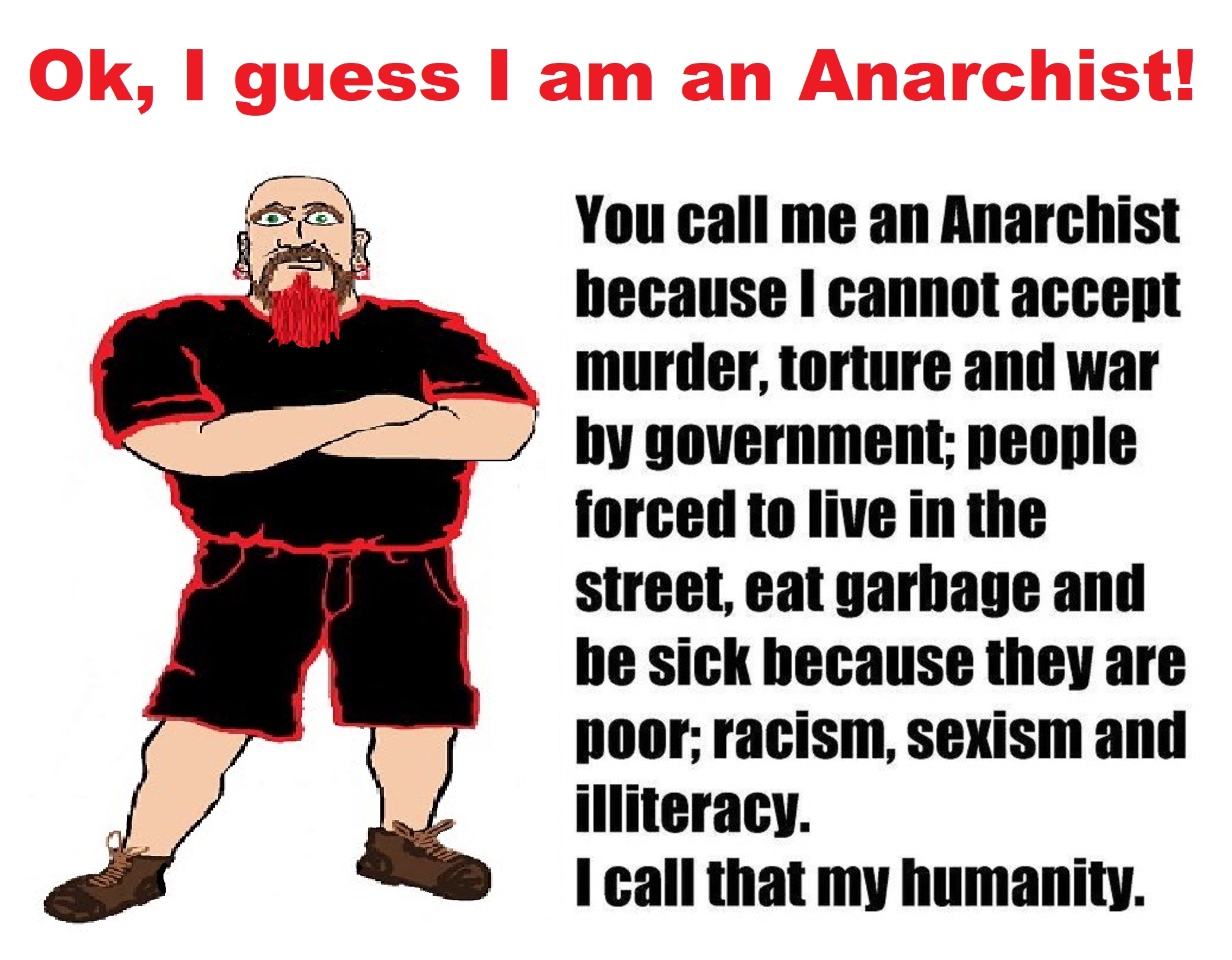


While hallucinogens are associated with shamanism, it is alcohol that is associated with paganism.
The Atheist-Humanist-Leftist Revolutionaries Shows in the prehistory series:
Show two: Pre-animism 300,000 years old and animism 100,000 years old: related to “Anarchism and Socialism”
Show tree: Totemism 50,000 years old: related to “Anarchism and Socialism”
Show four: Shamanism 30,000 years old: related to “Anarchism and Socialism”
Show five: Paganism 12,000 years old: related to “Anarchism and Socialism”
Show six: Emergence of hierarchy, sexism, slavery, and the new male god dominance: Paganism 7,000-5,000 years old: related to “Anarchism and Socialism” (Capitalism) (World War 0) Elite and their slaves!
Prehistory: related to “Anarchism and Socialism” the division of labor, power, rights, and recourses: VIDEO
Pre-animism 300,000 years old and animism 100,000 years old: related to “Anarchism and Socialism”: VIDEO
Totemism 50,000 years old: related to “Anarchism and Socialism”: VIDEO
Shamanism 30,000 years old: related to “Anarchism and Socialism”: VIDEO
Paganism 12,000 years old: related to “Anarchism and Socialism” (Pre-Capitalism): VIDEO
Paganism 7,000-5,000 years old: related to “Anarchism and Socialism” (Capitalism) (World War 0) Elite and their slaves: VIEDO
Paganism 5,000 years old: progressed organized religion and the state: related to “Anarchism and Socialism” (Kings and the Rise of the State): VIEDO
Paganism 4,000 years old: related to “Anarchism and Socialism” (First Moralistic gods, then the Origin time of Monotheism): VIEDO
I do not hate simply because I challenge and expose myths or lies any more than others being thought of as loving simply because of the protection and hiding from challenge their favored myths or lies.
The truth is best championed in the sunlight of challenge.
An archaeologist once said to me “Damien religion and culture are very different”
My response, So are you saying that was always that way, such as would you say Native Americans’ cultures are separate from their religions? And do you think it always was the way you believe?
I had said that religion was a cultural product. That is still how I see it and there are other archaeologists that think close to me as well. Gods too are the myths of cultures that did not understand science or the world around them, seeing magic/supernatural everywhere.
I personally think there is a goddess and not enough evidence to support a male god at Çatalhöyük but if there was both a male and female god and goddess then I know the kind of gods they were like Proto-Indo-European mythology.
This series idea was addressed in, Anarchist Teaching as Free Public Education or Free Education in the Public: VIDEO
Our 12 video series: Organized Oppression: Mesopotamian State Force and the Politics of power (9,000-4,000 years ago), is adapted from: The Complete and Concise History of the Sumerians and Early Bronze Age Mesopotamia (7000-2000 BC): https://www.youtube.com/watch?v=szFjxmY7jQA by “History with Cy“
Show #1: Mesopotamian State Force and the Politics of Power (Samarra, Halaf, Ubaid)
Show #2: Mesopotamian State Force and the Politics of Power
Show #3: Mesopotamian State Force and the Politics of Power (Uruk and the First Cities)
Show #4: Mesopotamian State Force and the Politics of Power (First Kings)
Show #5: Mesopotamian State Force and the Politics of Power (Early Dynastic Period)
Show #6: Mesopotamian State Force and the Politics of Power
Show #7: Mesopotamian State Force and the Politics of Power (Sargon and Akkadian Rule)
Show #9: Mesopotamian State Force and the Politics of Power (Gudea of Lagash and Utu-hegal)
Show #12: Mesopotamian State Force and the Politics of Power (Aftermath and Legacy of Sumer)

The “Atheist-Humanist-Leftist Revolutionaries”
Cory Johnston ☭ Ⓐ Atheist Leftist @Skepticallefty & I (Damien Marie AtHope) @AthopeMarie (my YouTube & related blog) are working jointly in atheist, antitheist, antireligionist, antifascist, anarchist, socialist, and humanist endeavors in our videos together, generally, every other Saturday.
Why Does Power Bring Responsibility?
Think, how often is it the powerless that start wars, oppress others, or commit genocide? So, I guess the question is to us all, to ask, how can power not carry responsibility in a humanity concept? I know I see the deep ethical responsibility that if there is power their must be a humanistic responsibility of ethical and empathic stewardship of that power. Will I be brave enough to be kind? Will I possess enough courage to be compassionate? Will my valor reach its height of empathy? I as everyone, earns our justified respect by our actions, that are good, ethical, just, protecting, and kind. Do I have enough self-respect to put my love for humanity’s flushing, over being brought down by some of its bad actors? May we all be the ones doing good actions in the world, to help human flourishing.
I create the world I want to live in, striving for flourishing. Which is not a place but a positive potential involvement and promotion; a life of humanist goal precision. To master oneself, also means mastering positive prosocial behaviors needed for human flourishing. I may have lost a god myth as an atheist, but I am happy to tell you, my friend, it is exactly because of that, leaving the mental terrorizer, god belief, that I truly regained my connected ethical as well as kind humanity.
Cory and I will talk about prehistory and theism, addressing the relevance to atheism, anarchism, and socialism.
At the same time as the rise of the male god, 7,000 years ago, there was also the very time there was the rise of violence, war, and clans to kingdoms, then empires, then states. It is all connected back to 7,000 years ago, and it moved across the world.
Cory Johnston: https://damienmarieathope.com/2021/04/cory-johnston-mind-of-a-skeptical-leftist/?v=32aec8db952d
The Mind of a Skeptical Leftist (YouTube)
Cory Johnston: Mind of a Skeptical Leftist @Skepticallefty
The Mind of a Skeptical Leftist By Cory Johnston: “Promoting critical thinking, social justice, and left-wing politics by covering current events and talking to a variety of people. Cory Johnston has been thoughtfully talking to people and attempting to promote critical thinking, social justice, and left-wing politics.” http://anchor.fm/skepticalleft
Cory needs our support. We rise by helping each other.
Cory Johnston ☭ Ⓐ @Skepticallefty Evidence-based atheist leftist (he/him) Producer, host, and co-host of 4 podcasts @skeptarchy @skpoliticspod and @AthopeMarie
Damien Marie AtHope (“At Hope”) Axiological Atheist, Anti-theist, Anti-religionist, Secular Humanist. Rationalist, Writer, Artist, Poet, Philosopher, Advocate, Activist, Psychology, and Armchair Archaeology/Anthropology/Historian.
Damien is interested in: Freedom, Liberty, Justice, Equality, Ethics, Humanism, Science, Atheism, Antiteism, Antireligionism, Ignosticism, Left-Libertarianism, Anarchism, Socialism, Mutualism, Axiology, Metaphysics, LGBTQI, Philosophy, Advocacy, Activism, Mental Health, Psychology, Archaeology, Social Work, Sexual Rights, Marriage Rights, Woman’s Rights, Gender Rights, Child Rights, Secular Rights, Race Equality, Ageism/Disability Equality, Etc. And a far-leftist, “Anarcho-Humanist.”
I am not a good fit in the atheist movement that is mostly pro-capitalist, I am anti-capitalist. Mostly pro-skeptic, I am a rationalist not valuing skepticism. Mostly pro-agnostic, I am anti-agnostic. Mostly limited to anti-Abrahamic religions, I am an anti-religionist.
To me, the “male god” seems to have either emerged or become prominent around 7,000 years ago, whereas the now favored monotheism “male god” is more like 4,000 years ago or so. To me, the “female goddess” seems to have either emerged or become prominent around 11,000-10,000 years ago or so, losing the majority of its once prominence around 2,000 years ago due largely to the now favored monotheism “male god” that grow in prominence after 4,000 years ago or so.
My Thought on the Evolution of Gods?
Animal protector deities from old totems/spirit animal beliefs come first to me, 13,000/12,000 years ago, then women as deities 11,000/10,000 years ago, then male gods around 7,000/8,000 years ago. Moralistic gods around 5,000/4,000 years ago, and monotheistic gods around 4,000/3,000 years ago.


Damien Marie AtHope (Said as “At” “Hope”)/(Autodidact Polymath but not good at math):
Axiological Atheist, Anti-theist, Anti-religionist, Secular Humanist, Rationalist, Writer, Artist, Jeweler, Poet, “autodidact” Philosopher, schooled in Psychology, and “autodidact” Armchair Archaeology/Anthropology/Pre-Historian (Knowledgeable in the range of: 1 million to 5,000/4,000 years ago). I am an anarchist socialist politically. Reasons for or Types of Atheism
My Website, My Blog, & Short-writing or Quotes, My YouTube, Twitter: @AthopeMarie, and My Email: damien.marie.athope@gmail.com

